Fifty Dangerous Books
Aleister Crowley, the incorrigible early 20th century English poet and magician, once said in his later years, ‘Give me anything, good or bad—as long as it is strong’. (And that is, shall we say, a rather toned-down paraphrase. And nor was he referring to libations).
I can relate (or as we used to say back in the day, I can dig it). Now in my late middle-age I find it increasingly hard to be impressed by something, unless it is bold, original, or unflinching in its look into the shadow realms of human nature. Here are 50 books (from my personal library of 3,000) that I have found compelling and the reasons why. There are many more than 50 of such books, obviously, and doubtless I’ll soon find myself wondering why I omitted that book, but I need to keep this essay short or my remaining book projects will never be completed.
The list below has been ranked, somewhat arbitrarily, from least to most. The topics vary considerably, from fringe-type books to the far out esoteric, to classics of world literature. Mainly it reflects my own reading over a lifetime of seeking wisdom (and occasionally, just entertainment). The outstanding quality of the books on this list is their ability to rock your views of reality, to shake up staid conditioning, to all but force one to look at things from a different perspective. This makes them ‘dangerous’ to complacent or lazy thinking.
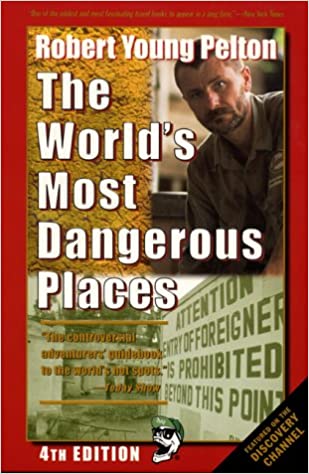 50. Fielding's The World's Most Dangerous Places, by Robert Young Pelton. Including a travel book on this list is a bit of a joke, but this is one travel guide that is full of dark humor and a grandly entertaining read. It is exactly what it pretends to be, a guide to the riskiest places to travel to on the planet. It is 900 pages of tiny font, packed with maps and info on how to survive the most horrible conditions in the very worst countries. (The edition I have is from 1998, but it is surprising how many of the most dangerous countries back then remain so now; it seems little has changed in that regard). Each country is rated accordingly, five stars for the most risky, etc. Some countries do not get a star rating, they get skulls or, in the case of North Korea, four hands, strongly recommending to not go under any circumstances. A section at the beginning is fittingly titled A polite discourse on liability (ours) and gullibility (yours), alongside catchy headings such as 'reach out and stop someone' and 'I can hear you knocking, but you can't come in'. Suffice to say this is mainly a book for men, and perhaps some women, under 40. (My own 'dangerous travels' were limited to being kidnapped in northern India in 1985 by a group of Kashmiri houseboat touts desperate for my business, and having a gun mistakenly pointed at me in Egypt in 1998 by a sleepy cop. The latter occurred when I was 39 years old. That was about my fill for a lifetime).
50. Fielding's The World's Most Dangerous Places, by Robert Young Pelton. Including a travel book on this list is a bit of a joke, but this is one travel guide that is full of dark humor and a grandly entertaining read. It is exactly what it pretends to be, a guide to the riskiest places to travel to on the planet. It is 900 pages of tiny font, packed with maps and info on how to survive the most horrible conditions in the very worst countries. (The edition I have is from 1998, but it is surprising how many of the most dangerous countries back then remain so now; it seems little has changed in that regard). Each country is rated accordingly, five stars for the most risky, etc. Some countries do not get a star rating, they get skulls or, in the case of North Korea, four hands, strongly recommending to not go under any circumstances. A section at the beginning is fittingly titled A polite discourse on liability (ours) and gullibility (yours), alongside catchy headings such as 'reach out and stop someone' and 'I can hear you knocking, but you can't come in'. Suffice to say this is mainly a book for men, and perhaps some women, under 40. (My own 'dangerous travels' were limited to being kidnapped in northern India in 1985 by a group of Kashmiri houseboat touts desperate for my business, and having a gun mistakenly pointed at me in Egypt in 1998 by a sleepy cop. The latter occurred when I was 39 years old. That was about my fill for a lifetime).
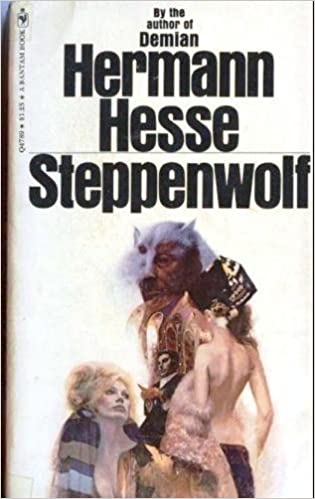
49. Steppenwolf, by Herman Hesse. Back in my early college days I read several of Hesse’s famous early 20th century novels. He unquestionably made a strong impact on many young seekers of the 1960s counterculture era in particular (though falling out of favor in later decades). My favorites of Hesse’s novels were Steppenwolf, Siddhartha, and Demian. Each one dealt with the theme of a young seeker encountering the deeper parts of his mind while being mentored by an older, wiser, male or female figure. Steppenwolf was published in 1927. The title refers to a wolf of the steppes (a species of Grey Wolf indigenous to Eastern Europe and Central Asia), who in the novel represents the hidden, darker nature of human beings, and in particular, how this nature clashes with the rigid needs of conformity in society (a concept greatly elaborated on a few years later by Freud in his Civilization and its Discontents). The main figure of the novel is one Harry Haller, who has written a manuscript titled Harry Haller’s Records (For Madmen Only). The book has long had a mixed reception. Indeed, it became almost as fashionable to dismiss Hesse as it was fashionable to read him in the 1960s and 70s. That said, all of Hesse’s novels are descriptions of a person on a journey of awakening to the greater dimensions of what it really means to be human. This makes Hesse a good introductory author for any embarking on a path of transformation who also seek examples from the world of literature.
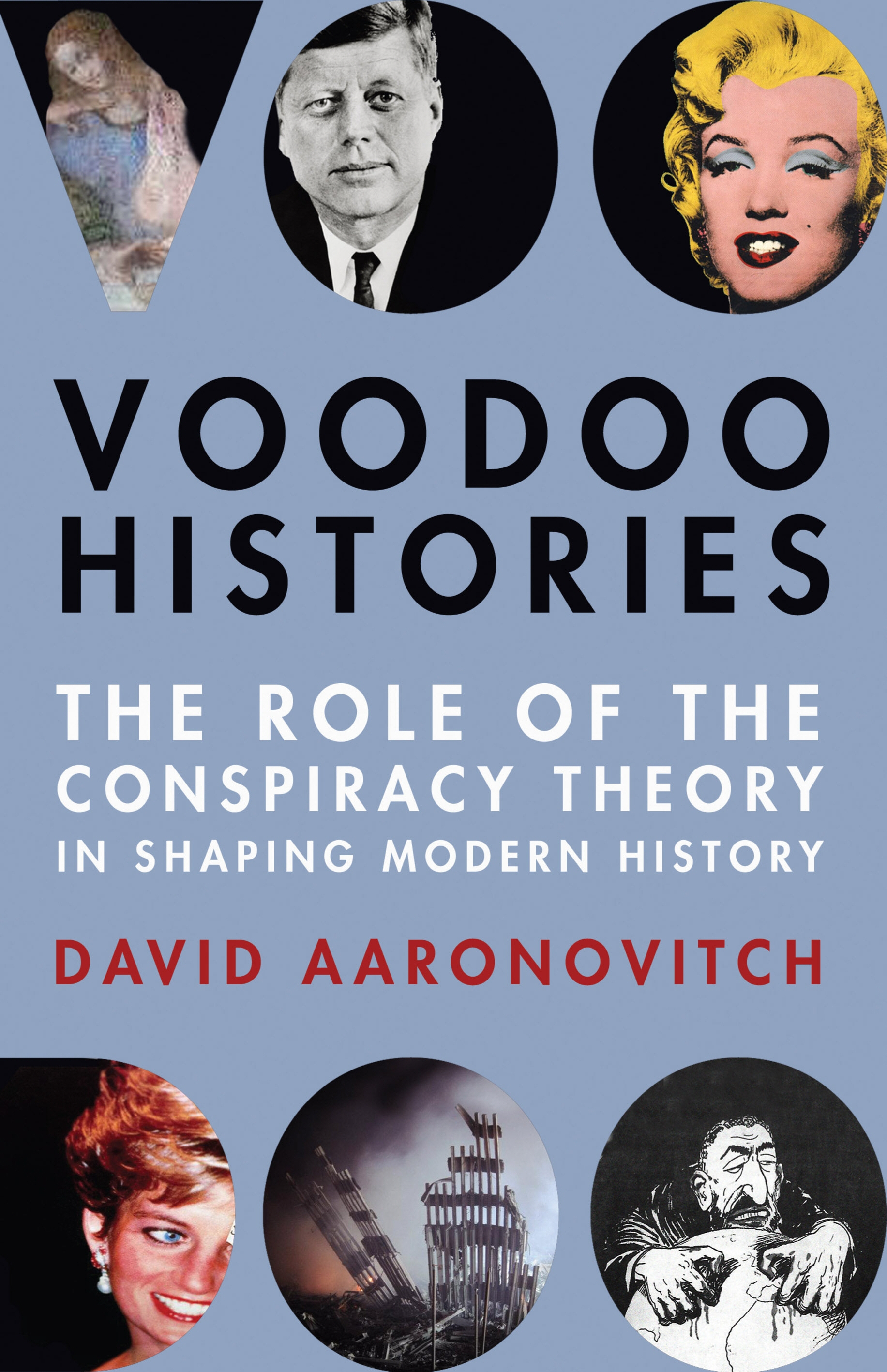 48. Voodoo Histories: The Role of Conspiracy Theory in Shaping Modern History (2010), by David Aaronovitch. I have never been especially interested in widely popular conspiracy theories, as most of them seem to be the products of dubious research and confirmation bias (cherry-picking data to validate emotionally charged beliefs). It is also true that most people are not trained in research methods, and interpretations of reality tend to be contagious, spreading quickly, especially among those with emotional complexes related to anti-authoritarianism. In Voodoo Histories, author Aaronivitch pretty effectively dismantles some of the more popular and stubborn conspiracy theories of the 20th and early 21st centuries, such as those attached to Pearl Harbor, the Kennedy assassination, Erich von Daniken’s ancient astronauts, Leigh and Baigent’s ‘Holy Grail’ secrets that largely ended up in Dan Brown’s mega-bestselling novels, the death of Princess Diana, 9-11, Obama’s birth certificate, and so forth.
48. Voodoo Histories: The Role of Conspiracy Theory in Shaping Modern History (2010), by David Aaronovitch. I have never been especially interested in widely popular conspiracy theories, as most of them seem to be the products of dubious research and confirmation bias (cherry-picking data to validate emotionally charged beliefs). It is also true that most people are not trained in research methods, and interpretations of reality tend to be contagious, spreading quickly, especially among those with emotional complexes related to anti-authoritarianism. In Voodoo Histories, author Aaronivitch pretty effectively dismantles some of the more popular and stubborn conspiracy theories of the 20th and early 21st centuries, such as those attached to Pearl Harbor, the Kennedy assassination, Erich von Daniken’s ancient astronauts, Leigh and Baigent’s ‘Holy Grail’ secrets that largely ended up in Dan Brown’s mega-bestselling novels, the death of Princess Diana, 9-11, Obama’s birth certificate, and so forth.
I should add here that I’m not so naïve as to suppose that the history of human civilization has not been rife with hidden agendas and extraordinary examples of covert manipulation. Unquestionably it has. But these hidden agendas generally surface of their own accord when the later history books are written. And you could say, they are more interesting than the flashier, more widely popular conspiracy theories that are more commonly proved false. All of which reinforces the old adage that truth is stranger than fiction. And usually more dangerous too.
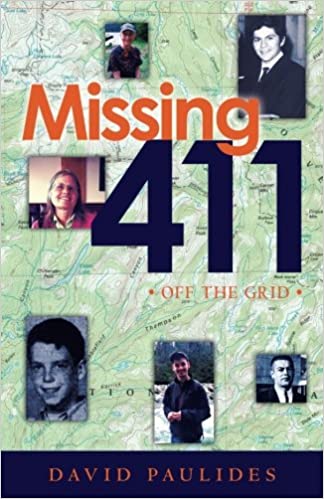 47. The 411 Missing books, all by David Paulides. There are a series of these books, all of them essentially records of people gone missing, and usually never found. The author of the series, one David Paulides, is a former police detective who had devoted his retirement to investigating the unsolved cases of missing people. He mainly focuses on cases in the United States and Canada. He is a pretty thorough researcher, for the most part, but unfortunately his reputation is tainted by his previous research into Fortean phenomena, most notably the so-called ‘Bigfoot’ legends. In addition, serious statisticians tend to dismiss Paulides’ research as not being statistically significant, meaning, given a large enough population, a certain percentage of people are bound to go missing under mysterious circumstances. But that does not diminish the compelling nature of these facts.
47. The 411 Missing books, all by David Paulides. There are a series of these books, all of them essentially records of people gone missing, and usually never found. The author of the series, one David Paulides, is a former police detective who had devoted his retirement to investigating the unsolved cases of missing people. He mainly focuses on cases in the United States and Canada. He is a pretty thorough researcher, for the most part, but unfortunately his reputation is tainted by his previous research into Fortean phenomena, most notably the so-called ‘Bigfoot’ legends. In addition, serious statisticians tend to dismiss Paulides’ research as not being statistically significant, meaning, given a large enough population, a certain percentage of people are bound to go missing under mysterious circumstances. But that does not diminish the compelling nature of these facts.
To Paulides’ credit, he does not conflate the paranormal realm with nuts and bolts investigative work, and he rarely speculates about the greater causes behind missing people, he mainly just presents the facts and leaves it up to the reader to form conclusions. These books are strangely compelling, doubtless because the idea of a missing person is reflective of a basic fear in the human condition, that of questioning our ultimate worth, purpose, and identity. If we suddenly disappeared, would the universe notice or care? The evidence points toward the answer to that being a resounding ‘no’. Which doesn’t mean that people in our life wouldn’t care, of course. And that in turn points us toward deeper issues such as the status and depth of our actual relationships, here and now. The ‘missing persons’ phenomenon is a fascinating investigative journey into some of the darker areas of human psychology.
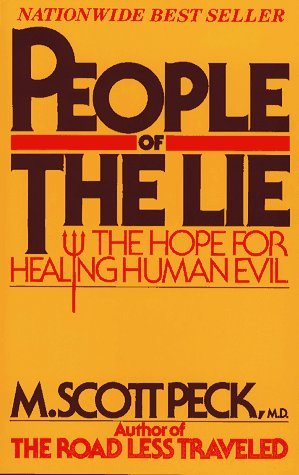 46. People of the Lie: The Hope for Healing Human Evil (1983), by M. Scott Peck. This is a strange, disturbing, and compelling book, written by an equally strange and compelling psychiatrist. Peck had cut his literary teeth with his 1978 bestseller The Road Less Traveled, the book most people remember him for. As far as self-help books go Road was solid, grounded in sound psychology, well-written, and respectable. Five years after that book, perhaps emboldened by his fame and success, Peck ventured out on a much further limb and wrote People of the Lie. The premise of the book is that there is a real psychological category of mental illness best defined as evil. The word ‘evil’ typically finds its home in the realm of ethics, morality, or religion, not psychology, and this is why Peck’s book ignited such a firestorm of controversy when it was released in the mid-1980s. For here was a renowned and respected (and even beloved) American psychiatrist and popular writer pretending to have discovered a psychological reality behind evil people, and one, moreover, not based on brain chemistry (which was less a thing back in the ‘80s than it is four decades later). Peck had theorized in Road that neurotic people tend to blame themselves during a crisis, whereas character-disordered people blame everyone else. In People of the Lie he zeroed in on the character-disordered types. That sociopaths and psychopaths (the ones who plan better) are not especially good at taking responsibility for their actions, are devoid of empathy, and are masters of subterfuge and gaslighting, is common knowledge, but Peck in the book delves deeply into several case studies of his own patients. He writes with flair and the descriptions he provides of his often-fruitless struggles with these patients, and in particular with their extraordinary and eerie capacity to manipulate, does give one chills. I am just not sure that this book wouldn’t have worked better as a novel. (And in fact, it reminds me in places of the screenwriting for the 2013-15 NBC crime thriller Hannibal—currently playing on Netflix for those with the constitution to watch it—if not nearly as theatrical). Nevertheless, a recommended read for any interested in the further reaches of shadow psychology.
46. People of the Lie: The Hope for Healing Human Evil (1983), by M. Scott Peck. This is a strange, disturbing, and compelling book, written by an equally strange and compelling psychiatrist. Peck had cut his literary teeth with his 1978 bestseller The Road Less Traveled, the book most people remember him for. As far as self-help books go Road was solid, grounded in sound psychology, well-written, and respectable. Five years after that book, perhaps emboldened by his fame and success, Peck ventured out on a much further limb and wrote People of the Lie. The premise of the book is that there is a real psychological category of mental illness best defined as evil. The word ‘evil’ typically finds its home in the realm of ethics, morality, or religion, not psychology, and this is why Peck’s book ignited such a firestorm of controversy when it was released in the mid-1980s. For here was a renowned and respected (and even beloved) American psychiatrist and popular writer pretending to have discovered a psychological reality behind evil people, and one, moreover, not based on brain chemistry (which was less a thing back in the ‘80s than it is four decades later). Peck had theorized in Road that neurotic people tend to blame themselves during a crisis, whereas character-disordered people blame everyone else. In People of the Lie he zeroed in on the character-disordered types. That sociopaths and psychopaths (the ones who plan better) are not especially good at taking responsibility for their actions, are devoid of empathy, and are masters of subterfuge and gaslighting, is common knowledge, but Peck in the book delves deeply into several case studies of his own patients. He writes with flair and the descriptions he provides of his often-fruitless struggles with these patients, and in particular with their extraordinary and eerie capacity to manipulate, does give one chills. I am just not sure that this book wouldn’t have worked better as a novel. (And in fact, it reminds me in places of the screenwriting for the 2013-15 NBC crime thriller Hannibal—currently playing on Netflix for those with the constitution to watch it—if not nearly as theatrical). Nevertheless, a recommended read for any interested in the further reaches of shadow psychology.
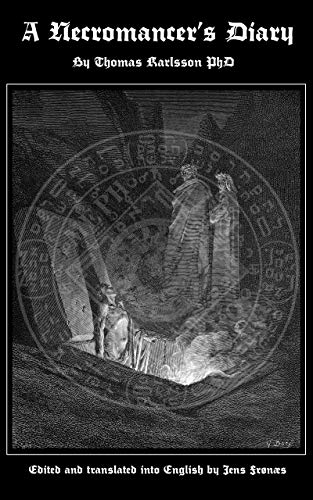 45. A Necromancer’s Diary, by Thomas Karlsson. This is one of the most bizarre books I have ever read, and that is saying something. (It is a kind of sequel to Karlsson’s earlier and equally bizarre Among Mystics and Magicians in Stockholm). A ‘necromancer’ is traditionally thought to be one who specializes in communicating with the dead, or, as this book specifies, as one who raises corpses and brings them back to life. The author, one Thomas Karlsson, is no lunatic. He holds a PhD in comparative religion from Stockholm University, and is the author of the respectable work Qliphoth, Kabbalah, and Goetic Magic. When he isn't lecturing in universities, he is leading an esoteric organization called Dragon Rouge. A very entertaining read, a sort of Herman Hesse’s Demian on steroids, although I take with a necromancer’s chunk of salt the author’s claim that these are all true stories.
45. A Necromancer’s Diary, by Thomas Karlsson. This is one of the most bizarre books I have ever read, and that is saying something. (It is a kind of sequel to Karlsson’s earlier and equally bizarre Among Mystics and Magicians in Stockholm). A ‘necromancer’ is traditionally thought to be one who specializes in communicating with the dead, or, as this book specifies, as one who raises corpses and brings them back to life. The author, one Thomas Karlsson, is no lunatic. He holds a PhD in comparative religion from Stockholm University, and is the author of the respectable work Qliphoth, Kabbalah, and Goetic Magic. When he isn't lecturing in universities, he is leading an esoteric organization called Dragon Rouge. A very entertaining read, a sort of Herman Hesse’s Demian on steroids, although I take with a necromancer’s chunk of salt the author’s claim that these are all true stories.
44. Man’s Search for Meaning, by Victor Frankl. This famous small book, written by its author in just nine days and released in 1946 right after WW2, is the work of an Austrian psychiatrist describing his harrowing years in Nazi concentration camps. 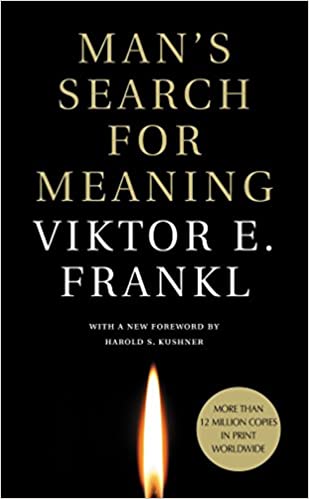 M. Scott Peck’s People of the Lie tried to present a psychological theory behind the reality of evil. Man’s Search for Meaning lays evil bare and exposes its reality in concrete terms that makes one shudder at just what human beings, working in large and seemingly functional organizations, are capable of. In the first part of the book Frankl describes the concentration camp experiences and in the second half he brings in his ideas of ‘logotherapy’, centered around the need for people to find meaning and purpose to their life. What distinguishes this book from the average run of the mill self-help work is its grounding in utterly unavoidable real-life suffering, and moreover, how the author navigated his way through such hells and emerged from it with deep insights into human nature. The book became a mega-bestseller, something that Frankl himself saw as problematic, as it suggested just how badly the average person seeks for (and alas, lacks) meaning in their lives.
M. Scott Peck’s People of the Lie tried to present a psychological theory behind the reality of evil. Man’s Search for Meaning lays evil bare and exposes its reality in concrete terms that makes one shudder at just what human beings, working in large and seemingly functional organizations, are capable of. In the first part of the book Frankl describes the concentration camp experiences and in the second half he brings in his ideas of ‘logotherapy’, centered around the need for people to find meaning and purpose to their life. What distinguishes this book from the average run of the mill self-help work is its grounding in utterly unavoidable real-life suffering, and moreover, how the author navigated his way through such hells and emerged from it with deep insights into human nature. The book became a mega-bestseller, something that Frankl himself saw as problematic, as it suggested just how badly the average person seeks for (and alas, lacks) meaning in their lives.
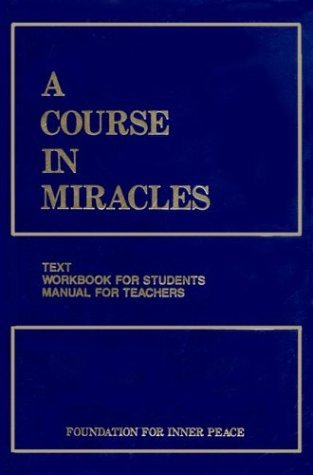 43. A Course in Miracles (1972), 'dictated' by Helen Schucman. One should never be thrown off by the seeming banality of the title of this book. In fact it is a dense, lyrical masterpiece of semi-gnostic wisdom, focusing on offering a thought-system that radically re-interprets the central mystery of Christ, as well as the meaning of the redemption, the resurrection, and sin. There is no question that the book has a psychological lens by which it views timeless mystical themes, and that further, this psychology has a decidedly 20th century feel to it (with its emphasis on projection), all of which lends credence to the idea that Helen Schucman, herself a trained psychologist, may have been more than just its unwilling scribe (she claimed that the text was dictated to her by a 'voice', similar to what Crowley claimed about The Book of the Law). But none of that detracts from the power and quality of the writing. One does have to wade through the dense language and its Christian terminology, but this is a minor irritant for any seeking insight into the wisdom possibilities inherent in relationship, a theme the book specializes in. A major strength of the book is its unflinching look into the hell-realms of ego. There is nothing Pollyanna-ish about this work.
43. A Course in Miracles (1972), 'dictated' by Helen Schucman. One should never be thrown off by the seeming banality of the title of this book. In fact it is a dense, lyrical masterpiece of semi-gnostic wisdom, focusing on offering a thought-system that radically re-interprets the central mystery of Christ, as well as the meaning of the redemption, the resurrection, and sin. There is no question that the book has a psychological lens by which it views timeless mystical themes, and that further, this psychology has a decidedly 20th century feel to it (with its emphasis on projection), all of which lends credence to the idea that Helen Schucman, herself a trained psychologist, may have been more than just its unwilling scribe (she claimed that the text was dictated to her by a 'voice', similar to what Crowley claimed about The Book of the Law). But none of that detracts from the power and quality of the writing. One does have to wade through the dense language and its Christian terminology, but this is a minor irritant for any seeking insight into the wisdom possibilities inherent in relationship, a theme the book specializes in. A major strength of the book is its unflinching look into the hell-realms of ego. There is nothing Pollyanna-ish about this work.
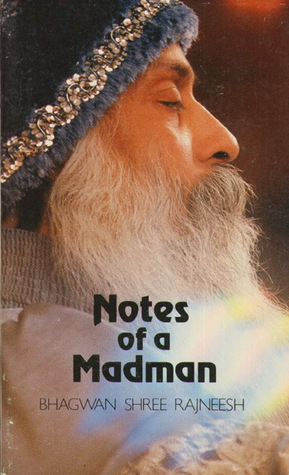 42. Notes of a Madman, by Osho. Osho--who for most of his teaching career was known as Bhagwan Shree Rajneesh--famously never wrote a single book, despite having been a philosophy professor before becoming a spiritual guru, and despite having a personal library of some 80,000 books. Nevertheless, over 600 published titles bear his name, though every single one of them is a transcription of a discourse faithfully recorded by his disciples. Osho lectured for about twenty years, more or less non-stop on a daily basis from 1970 to 1989, apart from one three year silent period in the early 1980s. This book, Notes of a Madman, is probably the strangest one credited to him. It essentially consists of a semi-stream of consciousness musings by Osho as he sat in his dental chair awaiting (or even undergoing, apparently) dental work. That said, there are some lucid insights in this small work, and if nothing else, it gives a remarkably open and honest glimpse into the mind of a famous teacher with a worldwide following.
42. Notes of a Madman, by Osho. Osho--who for most of his teaching career was known as Bhagwan Shree Rajneesh--famously never wrote a single book, despite having been a philosophy professor before becoming a spiritual guru, and despite having a personal library of some 80,000 books. Nevertheless, over 600 published titles bear his name, though every single one of them is a transcription of a discourse faithfully recorded by his disciples. Osho lectured for about twenty years, more or less non-stop on a daily basis from 1970 to 1989, apart from one three year silent period in the early 1980s. This book, Notes of a Madman, is probably the strangest one credited to him. It essentially consists of a semi-stream of consciousness musings by Osho as he sat in his dental chair awaiting (or even undergoing, apparently) dental work. That said, there are some lucid insights in this small work, and if nothing else, it gives a remarkably open and honest glimpse into the mind of a famous teacher with a worldwide following.
41. Possession, by T.K. Oesterreich. This book was originally published in German in 1921, and for several decades remained obscure, only of interest to specialists, until it was translated into English in 1966. Shortly after that the book was read by William Peter Blatty who used it as one of the primary sources for his novel The Exorcist (1971), soon to be followed by the blockbuster movie of the same name in 1973. Oesterreich was a pioneer in the exploration of paranormal and psychic phenomena, as well as the multiple personality disorders that so closely resemble the historical descriptions of spirit-possession one finds in the records and legends of more or less all older cultures. Oesterreich goes into extensive depth analyzing the legends and anecdotal commonality of spirit-possession from cultures prior to, or outside of, the scientific revolution, and so makes his general point that possession is mainly a psychological phenomenon reflecting the belief systems of those afflicted with it. The book is a curiosity because of its age (written a century ago), but also because it was a rare and early example of an academic trying to come to grips with a notoriously irrational subject. Novelist Blatty, for one, made hay with this book fifty years after its publication and twenty years after its author had croaked, mining it for much of his sensationalist material, after which he could (if he wanted to) laugh all the way to the bank.
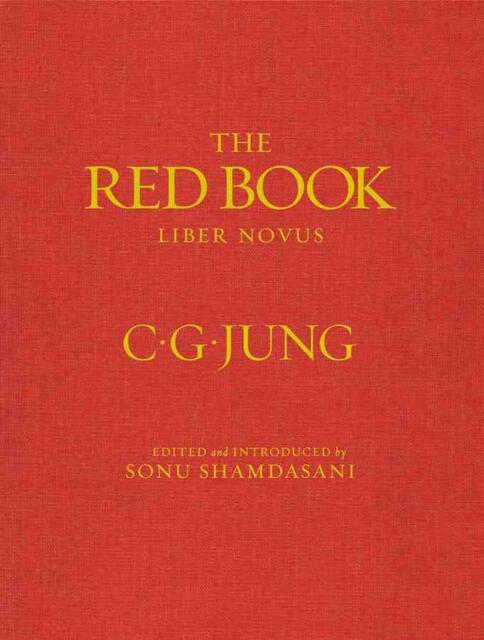 40. The Red Book, by C.G. Jung. Jung’s artistic masterwork published nearly fifty years after his death, and only after considerable persuasion of his surviving relatives by a group of academics spearheaded by Jung scholar Sonu Shamdasani. Most people think of The Red Book as some oversized art book full of impressive paintings and calligraphy. It is indeed that, in part. But it is also a direct narration of a talented psychologist’s near descent into madness. Jung began writing out his visions in 1913 in a series of journals called The Black Books (which have also been edited by the indefatigable Shamdasani, and which will be published in October of 2020). Over time, as Jung began to explore his unconscious via the method he called ‘active imagination’, vast visionary experiences opened up in his mind’s eye. The genesis of the book coincided with Jung’s break from Freud, with whom he had apprenticed under and been closely associated with for around six years. The jury had been out for some time as to whether or not this period in Jung’s journey reflected a ‘creative illness’ or a contemplative retreat or an actual brush with madness, though current scholarly views lean toward the ‘difficult experiment’ angle that Jung himself described it as. Either way, what was produced from this was extraordinary: bold, intricate paintings, alongside probing writings, similar to the creative work of William Blake, or to Medieval illuminated books. The cost of the book (several hundred dollars) further raises the bar and demands serious readers and students of Jung’s life and work.
40. The Red Book, by C.G. Jung. Jung’s artistic masterwork published nearly fifty years after his death, and only after considerable persuasion of his surviving relatives by a group of academics spearheaded by Jung scholar Sonu Shamdasani. Most people think of The Red Book as some oversized art book full of impressive paintings and calligraphy. It is indeed that, in part. But it is also a direct narration of a talented psychologist’s near descent into madness. Jung began writing out his visions in 1913 in a series of journals called The Black Books (which have also been edited by the indefatigable Shamdasani, and which will be published in October of 2020). Over time, as Jung began to explore his unconscious via the method he called ‘active imagination’, vast visionary experiences opened up in his mind’s eye. The genesis of the book coincided with Jung’s break from Freud, with whom he had apprenticed under and been closely associated with for around six years. The jury had been out for some time as to whether or not this period in Jung’s journey reflected a ‘creative illness’ or a contemplative retreat or an actual brush with madness, though current scholarly views lean toward the ‘difficult experiment’ angle that Jung himself described it as. Either way, what was produced from this was extraordinary: bold, intricate paintings, alongside probing writings, similar to the creative work of William Blake, or to Medieval illuminated books. The cost of the book (several hundred dollars) further raises the bar and demands serious readers and students of Jung’s life and work.
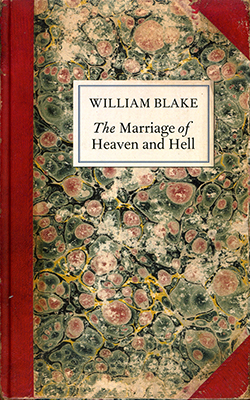 39. The Marriage of Heaven and Hell, by William Blake. In some ways, this book was Blake’s answer to Dante (The Divine Comedy), Milton (Paradise Lost), and especially the Swedish mystic Swedenborg (Heaven and Hell). Blake’s work was always based on an inclusive vision. Though influenced by Swedenborg in his early years, he rejected sharp moral dualism, reflected in his title ‘Marriage’ of Heaven and Hell. Blake was, in general, a very advanced thinker, seeing beyond the puritanical moralism that is found even in the ‘sorcerer’s books’, the grimoires of learned magic. Religious dualism—the notion that ‘good’ and ‘evil’ are irrevocably split and never the twain shall meet—infuses most of civilization, West or East, and if in that matter only, they do indeed meet. This dualism extends to material and spiritual, finding its apotheosis in some traditions that hold good and evil, spirit and matter, as coeval and equal, as well as absolutely separate. Blake was a thinker who sought to see the divine in all, including matter, the body, and the senses. His famous refrain, ‘energy is eternal delight’, speaks to his overarching desire to reconcile human nature, found in his words ‘Without contraries there is no progression’. Much as a person’s personality develops best when it is occasionally tested or challenged, so too a person develops best when all sides of their nature are embraced. The Marriage of Heaven and Hell found its partial echo two centuries later in Ken Wilber’s The Marriage of Sense and Soul, based on Wilber’s advanced Integral theory. To be clear, Blake was mainly a Romantic, but in some ways he was one of the forerunners of the modern integral movement that seeks to unify and integrate, rather than reinforce dualism and rejection of shadow qualities. Blake wrote,
39. The Marriage of Heaven and Hell, by William Blake. In some ways, this book was Blake’s answer to Dante (The Divine Comedy), Milton (Paradise Lost), and especially the Swedish mystic Swedenborg (Heaven and Hell). Blake’s work was always based on an inclusive vision. Though influenced by Swedenborg in his early years, he rejected sharp moral dualism, reflected in his title ‘Marriage’ of Heaven and Hell. Blake was, in general, a very advanced thinker, seeing beyond the puritanical moralism that is found even in the ‘sorcerer’s books’, the grimoires of learned magic. Religious dualism—the notion that ‘good’ and ‘evil’ are irrevocably split and never the twain shall meet—infuses most of civilization, West or East, and if in that matter only, they do indeed meet. This dualism extends to material and spiritual, finding its apotheosis in some traditions that hold good and evil, spirit and matter, as coeval and equal, as well as absolutely separate. Blake was a thinker who sought to see the divine in all, including matter, the body, and the senses. His famous refrain, ‘energy is eternal delight’, speaks to his overarching desire to reconcile human nature, found in his words ‘Without contraries there is no progression’. Much as a person’s personality develops best when it is occasionally tested or challenged, so too a person develops best when all sides of their nature are embraced. The Marriage of Heaven and Hell found its partial echo two centuries later in Ken Wilber’s The Marriage of Sense and Soul, based on Wilber’s advanced Integral theory. To be clear, Blake was mainly a Romantic, but in some ways he was one of the forerunners of the modern integral movement that seeks to unify and integrate, rather than reinforce dualism and rejection of shadow qualities. Blake wrote,
Energy is the only life and is from the Body and Reason is the bound or outward circumference of Energy.
There is a reason why my guru in the 1980s, Osho, greatly admired Blake, because he always sought to see the divine in the material, physical, and sexual domains, rather than seeing these realms as problematic or prone to fostering evil, a view implied in many organized religions. This made Blake something of a patron saint of 20th century attempts to integrate Eastern world-denying mysticism with Western materialism and the powerful forces of the flesh.
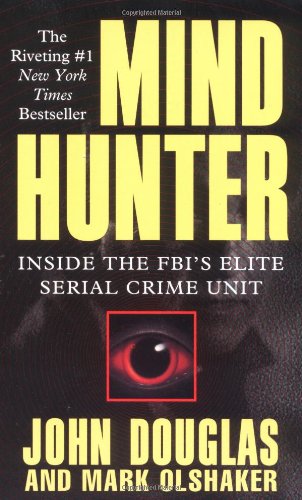 38. Mindhunter: Inside the FBI’s Elite Serial Crime Unit. The psychology of deviance is one of the most compelling areas of learning about the human condition—for those who can stomach it. Netflix created a series in 2017 that was based on this 1996 book authored by John Douglas and Mark Olshaker. Douglas was an FBI agent and criminal profiler who specialized in getting inside the heads (so to speak) of some of the most deviant and dangerous men in recorded history. He has been widely recognized as the leading expert on the psychology of serial killers. Books such as these (and Douglas, aided by co-writer/filmmaker Olshaker has written several) are compelling precisely because they deal with some of the ultimate social taboos as well as the figure of what is loosely termed the ‘intelligent psychopath’. This figure in turn mirrors some of the darkest elements of the human condition. When Blake, in his famous poem The Tyger, wrote…
38. Mindhunter: Inside the FBI’s Elite Serial Crime Unit. The psychology of deviance is one of the most compelling areas of learning about the human condition—for those who can stomach it. Netflix created a series in 2017 that was based on this 1996 book authored by John Douglas and Mark Olshaker. Douglas was an FBI agent and criminal profiler who specialized in getting inside the heads (so to speak) of some of the most deviant and dangerous men in recorded history. He has been widely recognized as the leading expert on the psychology of serial killers. Books such as these (and Douglas, aided by co-writer/filmmaker Olshaker has written several) are compelling precisely because they deal with some of the ultimate social taboos as well as the figure of what is loosely termed the ‘intelligent psychopath’. This figure in turn mirrors some of the darkest elements of the human condition. When Blake, in his famous poem The Tyger, wrote…
When the stars threw down their spears
And water’d heaven with their tears:
Did he smile his work to see?
Did he who made the Lamb make thee?
…he was asking the ultimate moral question: did the same God who made the gentle lamb, also make the brutal and merciless tiger? Of course, a serial killer cannot be compared to a tiger, as one is a deviant monster and the other an innocent beast of Nature. But both are deadly, and both are capable of dispatching the ‘lamb’ without hesitation. In that regard, we humans are not equal to animals, we are far worse. And how does such evil come to be? Or in the words of Private Train in Terrence Malick’s brilliant 1998 war movie The Thin Red Line:
This great evil, where's it come from? How'd it steal into the world? What seed, what root did it grow from? Who's doing this? Who's killing us, robbing us of life and light, mocking us with the sight of what we might've known? Does our ruin benefit the earth, does it help the grass to grow, the sun to shine? Is this darkness in you, too? Have you passed through this night?
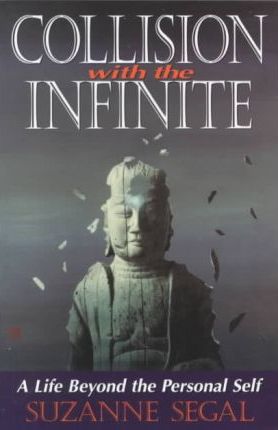 37. Collision With the Infinite (1997), by Suzanne Segal. This unusual book fascinatingly documents a woman’s direct experience of…enlightenment? Madness? Depersonalization? The effects of a brain tumor? In the book Segal describes her experiences of ‘no-self’, first occurring spontaneously while waiting one day for a bus, followed by years of anxiety attacks as she faces squarely into the realization that the self is a psychological construction, one that can easily be deconstructed. She passed through years of psychotherapy (and became romantically involved with some of her therapists), eventually finds some teachers of the Advaita Vedanta tradition who confirm for her that she is not crazy, and ultimately ends up a spiritual teacher herself. Sadly, this upward trajectory was not to last. Not long after the publication of her book she ended up experiencing a relapse and recurrence of her anxiety, followed by the diagnosis at only 42 of a malignant brain tumor. She died shortly after. Her premature death only enhanced the mystery of what exactly she was experiencing and the causes behind it. That said, most of those who sat in her presence while she taught vouched for her quality and the high level of her realizations. A number of prominent spiritual teachers endorsed her. A major strength of the book is the openness and candor of the writing.
37. Collision With the Infinite (1997), by Suzanne Segal. This unusual book fascinatingly documents a woman’s direct experience of…enlightenment? Madness? Depersonalization? The effects of a brain tumor? In the book Segal describes her experiences of ‘no-self’, first occurring spontaneously while waiting one day for a bus, followed by years of anxiety attacks as she faces squarely into the realization that the self is a psychological construction, one that can easily be deconstructed. She passed through years of psychotherapy (and became romantically involved with some of her therapists), eventually finds some teachers of the Advaita Vedanta tradition who confirm for her that she is not crazy, and ultimately ends up a spiritual teacher herself. Sadly, this upward trajectory was not to last. Not long after the publication of her book she ended up experiencing a relapse and recurrence of her anxiety, followed by the diagnosis at only 42 of a malignant brain tumor. She died shortly after. Her premature death only enhanced the mystery of what exactly she was experiencing and the causes behind it. That said, most of those who sat in her presence while she taught vouched for her quality and the high level of her realizations. A number of prominent spiritual teachers endorsed her. A major strength of the book is the openness and candor of the writing.
 36. The Book of Ceremonial Magic, by A.E. Waite. This work, originally published in 1898, is a classic on the topic of ceremonial magic and the literature of what are loosely categorized as ‘grimoires’. Waite was a scholar of the occult, as well as of alchemy and the Grail myths, but he remained a Christian at heart and this shows via his dismissive attitude in much of the book. Nonetheless, he gets the job done, and presents a wide-ranging overview of the most infamous ‘books of the sorcerers’ of Medieval and Early Modern Europe. These really are the black books, the ones concerned with praying to God, purifying, and then evoking the various and sundry forces of darkness to do the bidding of the magician. The notion of evocation magic is rarely understood. In my own book The Dancing Sorcerer (2020, Anathema Publishing), I wrote about the psychological correlates of Goetic spirits. Some readers misunderstood me to be implying that these spirits and demons and angels are only ‘all in your head’. In fact, I never wrote that and nor do I believe that. What I do maintain is that there is a direct correspondence or link between what is metaphysically ‘real’ (corporeal) and ‘ideal’ (psychic), a link that is atemporal, or synchronous. Thus, a magician or shaman does not truly ‘call upon’ a spirit, he/she rather responds to an existing connection, and in so doing has the opportunity to redeem or energize an element of their personality. The process is largely internal, but it no more requires the spirit to be ‘unreal’ than a menu in a restaurant requires the food to be imaginary.
36. The Book of Ceremonial Magic, by A.E. Waite. This work, originally published in 1898, is a classic on the topic of ceremonial magic and the literature of what are loosely categorized as ‘grimoires’. Waite was a scholar of the occult, as well as of alchemy and the Grail myths, but he remained a Christian at heart and this shows via his dismissive attitude in much of the book. Nonetheless, he gets the job done, and presents a wide-ranging overview of the most infamous ‘books of the sorcerers’ of Medieval and Early Modern Europe. These really are the black books, the ones concerned with praying to God, purifying, and then evoking the various and sundry forces of darkness to do the bidding of the magician. The notion of evocation magic is rarely understood. In my own book The Dancing Sorcerer (2020, Anathema Publishing), I wrote about the psychological correlates of Goetic spirits. Some readers misunderstood me to be implying that these spirits and demons and angels are only ‘all in your head’. In fact, I never wrote that and nor do I believe that. What I do maintain is that there is a direct correspondence or link between what is metaphysically ‘real’ (corporeal) and ‘ideal’ (psychic), a link that is atemporal, or synchronous. Thus, a magician or shaman does not truly ‘call upon’ a spirit, he/she rather responds to an existing connection, and in so doing has the opportunity to redeem or energize an element of their personality. The process is largely internal, but it no more requires the spirit to be ‘unreal’ than a menu in a restaurant requires the food to be imaginary.
That aside, Waite’s book is recognized as a classic, and one can only admire the effort he put into his research, gathering together materials that were not just difficult to access in his time, but also deeply feared and unpopular with the general public. Of course, Waite’s audience (and the audience of all occultists) is a specialized subculture, and one little concerned with the views of the masses. Or as Goethe once put it:
Tell a wise person, or keep silent, because the mass man will mock it right away.
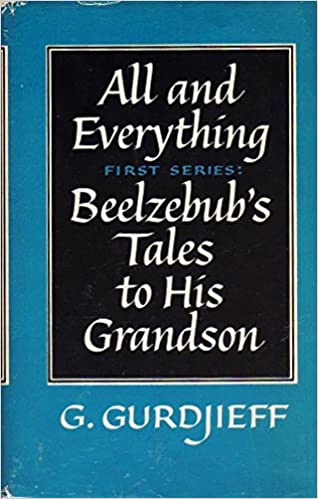 35. Beelzebub’s Tales to His Grandson, by G.I. Gurdjieff. The great Greek-Armenian mystic G.I. Gurdjieff (1872-1949) only wrote a few books. Beelzebub’s Tales to His Grandson is his magnum opus, a thousand-page quasi science-fiction novel centered on the corrupted psychological and spiritual condition of human beings, and the historical and present-time reasons for this decline and corruption. It is an extremely difficult read, usually tackled only by serious students of Gurdjieff. I myself was in the ‘Gurdjieff Work’ (as it is called by its members) in the early 1980s, and I’ve retained a lifelong interest in this charismatic rogue guru. That said, I found Beelzebub (as do most people) very difficult to get through, worse than James Joyce’s Ulysses, if not quite as bad as Finnegan’s Wake. Very peculiar are some of the parallels found in Beelzebub and the series of books written by Zecharia Sitchin on the so-called ‘12th Planet’ and various crackpot theories connecting Sumerian records with dubious astronomical theories. Sitchin however presented his work as non-fiction. Gurdjieff had the wisdom to craft his as fiction, which paradoxically, makes it much more effective. If one can actually finish the book.
35. Beelzebub’s Tales to His Grandson, by G.I. Gurdjieff. The great Greek-Armenian mystic G.I. Gurdjieff (1872-1949) only wrote a few books. Beelzebub’s Tales to His Grandson is his magnum opus, a thousand-page quasi science-fiction novel centered on the corrupted psychological and spiritual condition of human beings, and the historical and present-time reasons for this decline and corruption. It is an extremely difficult read, usually tackled only by serious students of Gurdjieff. I myself was in the ‘Gurdjieff Work’ (as it is called by its members) in the early 1980s, and I’ve retained a lifelong interest in this charismatic rogue guru. That said, I found Beelzebub (as do most people) very difficult to get through, worse than James Joyce’s Ulysses, if not quite as bad as Finnegan’s Wake. Very peculiar are some of the parallels found in Beelzebub and the series of books written by Zecharia Sitchin on the so-called ‘12th Planet’ and various crackpot theories connecting Sumerian records with dubious astronomical theories. Sitchin however presented his work as non-fiction. Gurdjieff had the wisdom to craft his as fiction, which paradoxically, makes it much more effective. If one can actually finish the book.
 34. The Chaung Tzu, by Chaung Tzu. Chaung Tzu—or Zhuang Zhou as he is more commonly known now—was roughly a contemporary of the legendary Lao Tzu (supposed author of the Tao Te Ching), although Chaung Tzu is better documented and seems very likely to have been a real person. He is believed to have lived a few centuries before Christ in eastern China. As with all these biographical matters, however, the story of the person is eclipsed by the value of what they wrote. Personalities fade with time and disappear, like sand sculptures. But ideas, expressed via writings, persist, perhaps proof as much as anything that we inhabit a universe of consciousness and thought. The Chaung Tzu is full of pithy wisdom, cutting at the root of human delusions brought about by collective conditioning. He is one of the very best teachers for those seeking radical awakening.
34. The Chaung Tzu, by Chaung Tzu. Chaung Tzu—or Zhuang Zhou as he is more commonly known now—was roughly a contemporary of the legendary Lao Tzu (supposed author of the Tao Te Ching), although Chaung Tzu is better documented and seems very likely to have been a real person. He is believed to have lived a few centuries before Christ in eastern China. As with all these biographical matters, however, the story of the person is eclipsed by the value of what they wrote. Personalities fade with time and disappear, like sand sculptures. But ideas, expressed via writings, persist, perhaps proof as much as anything that we inhabit a universe of consciousness and thought. The Chaung Tzu is full of pithy wisdom, cutting at the root of human delusions brought about by collective conditioning. He is one of the very best teachers for those seeking radical awakening.
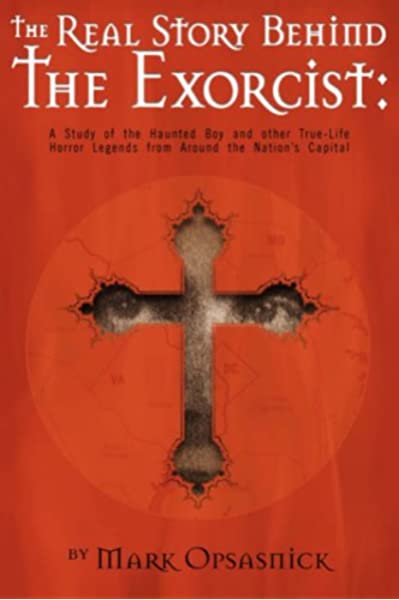 33. The Real Story Behind The Exorcist, by Mark Opsasnick. This short book, published in 2006, is much more interesting than the novel and movie (both from the early 1970s) it is based on. It is largely an extended essay (first published in Fate Magazine in 1998), detailing the dogged work of a journalist getting to the truth behind one of the most sensational stories of the late 20th century. In many ways reality is a shifting hall of distorted mirrors, and the truths behind things are so easily distorted or lost altogether. Nietzsche had once written, ‘there are no facts, only interpretations’. This is obviously a deep philosophical matter, and yet it does not mean that facts in and of themselves cannot be unearthed—regardless of how we may interpret these facts. There is something eerie and disturbing about Opsasnick’s small book, and it lies in the reality that his detective work in exposing the underbelly of a fearsome mythology having its roots in an ancient Sumerian deity is more gripping and more real than the idea of the deity itself. For it reveals the human capacity for deception, trickery, and sheer obfuscation. Most such ‘stories’ throughout history have been irretrievably lost, leaving us only with a grotesquely distorted legend (upon which entire traditions may be based). Opsasnick’s work is an example of where the story behind the legend was not lost, but was found and revealed, a testament to one journalist’s tenacious search for the reality behind the mask.
33. The Real Story Behind The Exorcist, by Mark Opsasnick. This short book, published in 2006, is much more interesting than the novel and movie (both from the early 1970s) it is based on. It is largely an extended essay (first published in Fate Magazine in 1998), detailing the dogged work of a journalist getting to the truth behind one of the most sensational stories of the late 20th century. In many ways reality is a shifting hall of distorted mirrors, and the truths behind things are so easily distorted or lost altogether. Nietzsche had once written, ‘there are no facts, only interpretations’. This is obviously a deep philosophical matter, and yet it does not mean that facts in and of themselves cannot be unearthed—regardless of how we may interpret these facts. There is something eerie and disturbing about Opsasnick’s small book, and it lies in the reality that his detective work in exposing the underbelly of a fearsome mythology having its roots in an ancient Sumerian deity is more gripping and more real than the idea of the deity itself. For it reveals the human capacity for deception, trickery, and sheer obfuscation. Most such ‘stories’ throughout history have been irretrievably lost, leaving us only with a grotesquely distorted legend (upon which entire traditions may be based). Opsasnick’s work is an example of where the story behind the legend was not lost, but was found and revealed, a testament to one journalist’s tenacious search for the reality behind the mask.
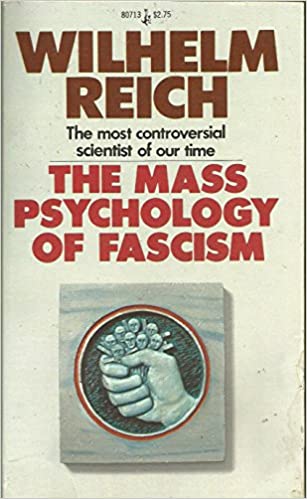 32. The Mass Psychology of Fascism (1933), by Wilhelm Reich. Reich, the controversial and mainly dismissed Austrian psychoanalyst who died in prison in 1957, deserves mention on this list somewhere if for no other reason than his radical ideas and sheer originality. He wrote around a dozen books, including such radical and influential works as The Function of the Orgasm, Character Analysis, and Listen Little Man. In his The Mass Psychology of Fascism (1933), he presents his thesis that fascists who rise to power demonstrate classic symptoms of sexual repression. Initially his book was seen as an attack on the Soviet communists, and for this Reich was expelled from the German Communist Party that he’d had membership in at that time. Following the Nazis rise to power in the 1930s his book was also condemned by them as an attack on Fascism, and the book was burned publicly. Interestingly, the torching of Reich’s books was not limited to the Nazis. An American judge in 1954 also ordered the burning of Reich’s books owing to what was judged as promoting scientifically dangerous ideas, such as the development of energy-accumulating devices designed to aid in healing. All these book-burnings simply demonstrate fear of what Reich was talking about, and so exemplifies as well as anything the ‘dangerous’ ideas basic to this list of works. And that is not to suggest that Reich was some misunderstood saint crucified for his purity. Not exactly. Reich in his later years demonstrated some convincing signs of mental illness, although that alone means little. Nietzsche and Van Gogh both went mad in their later years and yet few question their genius or the remarkable value of their legacy. Reich’s seminal ideas on sexual repression and the ways it shapes character are worthy of study by any serious student of the human condition.
32. The Mass Psychology of Fascism (1933), by Wilhelm Reich. Reich, the controversial and mainly dismissed Austrian psychoanalyst who died in prison in 1957, deserves mention on this list somewhere if for no other reason than his radical ideas and sheer originality. He wrote around a dozen books, including such radical and influential works as The Function of the Orgasm, Character Analysis, and Listen Little Man. In his The Mass Psychology of Fascism (1933), he presents his thesis that fascists who rise to power demonstrate classic symptoms of sexual repression. Initially his book was seen as an attack on the Soviet communists, and for this Reich was expelled from the German Communist Party that he’d had membership in at that time. Following the Nazis rise to power in the 1930s his book was also condemned by them as an attack on Fascism, and the book was burned publicly. Interestingly, the torching of Reich’s books was not limited to the Nazis. An American judge in 1954 also ordered the burning of Reich’s books owing to what was judged as promoting scientifically dangerous ideas, such as the development of energy-accumulating devices designed to aid in healing. All these book-burnings simply demonstrate fear of what Reich was talking about, and so exemplifies as well as anything the ‘dangerous’ ideas basic to this list of works. And that is not to suggest that Reich was some misunderstood saint crucified for his purity. Not exactly. Reich in his later years demonstrated some convincing signs of mental illness, although that alone means little. Nietzsche and Van Gogh both went mad in their later years and yet few question their genius or the remarkable value of their legacy. Reich’s seminal ideas on sexual repression and the ways it shapes character are worthy of study by any serious student of the human condition.
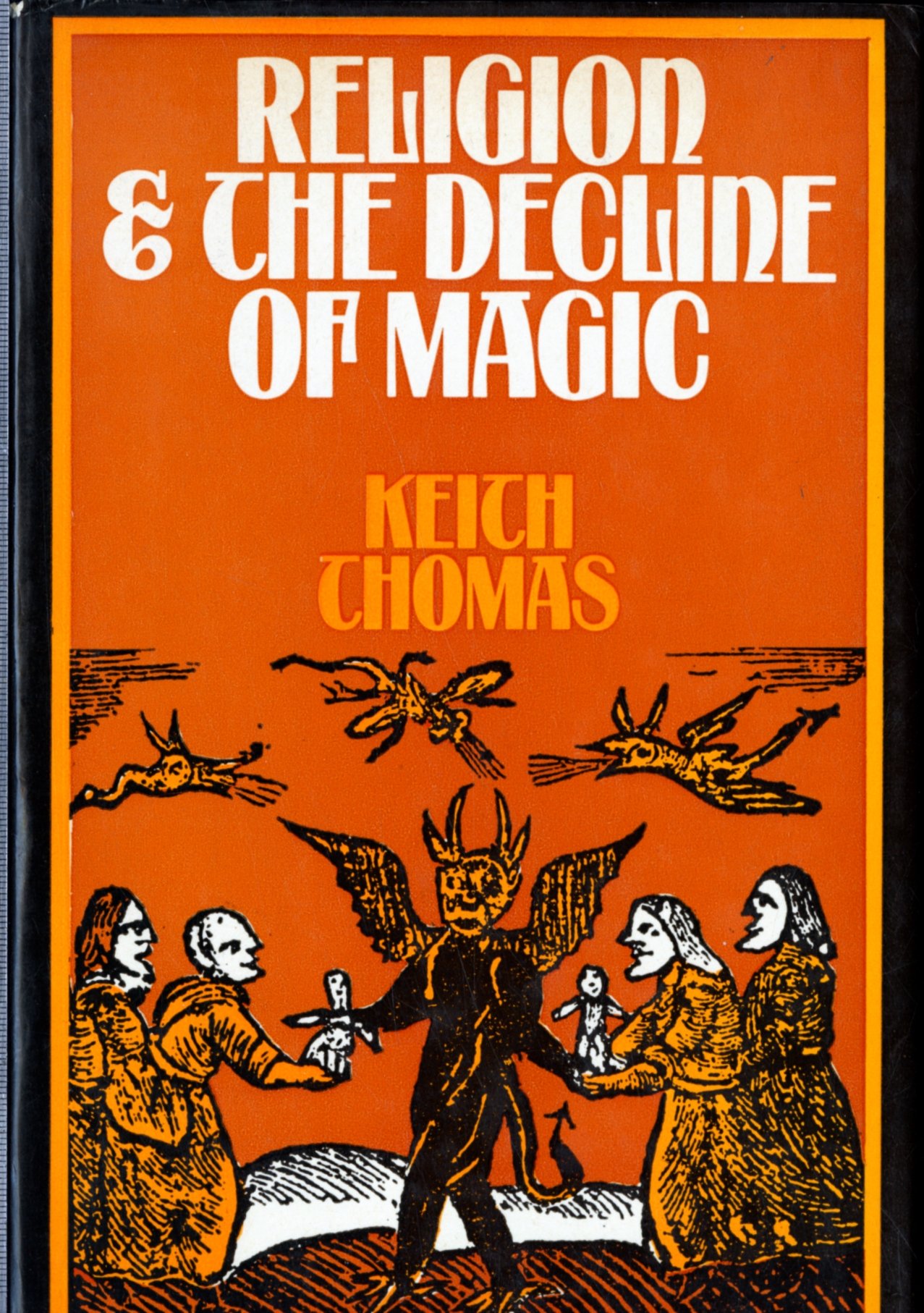 31. Religion and the Decline of Magic (1971), by Keith Thomas. This is one the very best historical works focusing on European magic and witchcraft, although the author limits his focus to Britain of the 1500s-1600s. The research and scholarship is top-notch, opening a window on the culture of an important crossroad in history when nascent science and other factors were contributing to the decline of the occult traditions of magic, witchcraft, and astrology. Thomas called magic an ‘ineffective technique to allay anxiety’, which it is not in at least the more metaphysical modern approaches developed by the 19th century Order of the Golden Dawn, but his insight remains keen when looking at how it was regarded by the average person. Clear historical studies are useful for many reasons, not least of which is that they help deepen compassion for the human condition, by the understanding that we ourselves, if finding ourselves alive in such historical times with the same cultural limitations, would in all likelihood have been just another character in that history. Our sole difference is that we enjoy the perspective of a different time.
31. Religion and the Decline of Magic (1971), by Keith Thomas. This is one the very best historical works focusing on European magic and witchcraft, although the author limits his focus to Britain of the 1500s-1600s. The research and scholarship is top-notch, opening a window on the culture of an important crossroad in history when nascent science and other factors were contributing to the decline of the occult traditions of magic, witchcraft, and astrology. Thomas called magic an ‘ineffective technique to allay anxiety’, which it is not in at least the more metaphysical modern approaches developed by the 19th century Order of the Golden Dawn, but his insight remains keen when looking at how it was regarded by the average person. Clear historical studies are useful for many reasons, not least of which is that they help deepen compassion for the human condition, by the understanding that we ourselves, if finding ourselves alive in such historical times with the same cultural limitations, would in all likelihood have been just another character in that history. Our sole difference is that we enjoy the perspective of a different time.
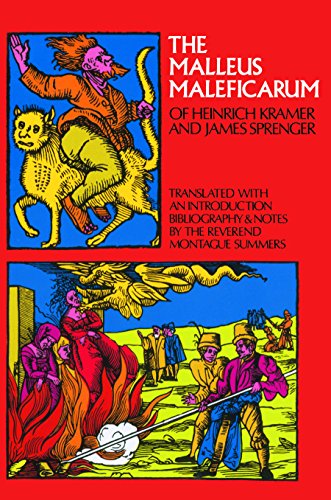 30. Malleus Maleficarum and Compendium Maleficarum. These are two distinct works, the first published in 1486 by the German monk Heinrich Kramer, and the second in 1608 by the Italian Francisco Guazzo, however I include them together as they both deal with an essentially identical theme, that of justifying the hunting, prosecution, and punishment of witches. These works are infamous examples of misogyny and religious delusion and are among the most difficult to read in this entire list. Nevertheless, they are historically important as they reveal in explicit detail the psychology and sociology underlying the witch-craze that was active in mainly Western Europe and parts of North America from approximately 1450 to 1700. One of the main points of history is to retain records of deviant directions taken by societies over time, with a view to not repeating such abnormal deviations in the future. For we humans are inclined to repeat that which we have come to forget. And this is why history should never be whitewashed or removed simply because it offends sensibilities.
30. Malleus Maleficarum and Compendium Maleficarum. These are two distinct works, the first published in 1486 by the German monk Heinrich Kramer, and the second in 1608 by the Italian Francisco Guazzo, however I include them together as they both deal with an essentially identical theme, that of justifying the hunting, prosecution, and punishment of witches. These works are infamous examples of misogyny and religious delusion and are among the most difficult to read in this entire list. Nevertheless, they are historically important as they reveal in explicit detail the psychology and sociology underlying the witch-craze that was active in mainly Western Europe and parts of North America from approximately 1450 to 1700. One of the main points of history is to retain records of deviant directions taken by societies over time, with a view to not repeating such abnormal deviations in the future. For we humans are inclined to repeat that which we have come to forget. And this is why history should never be whitewashed or removed simply because it offends sensibilities.
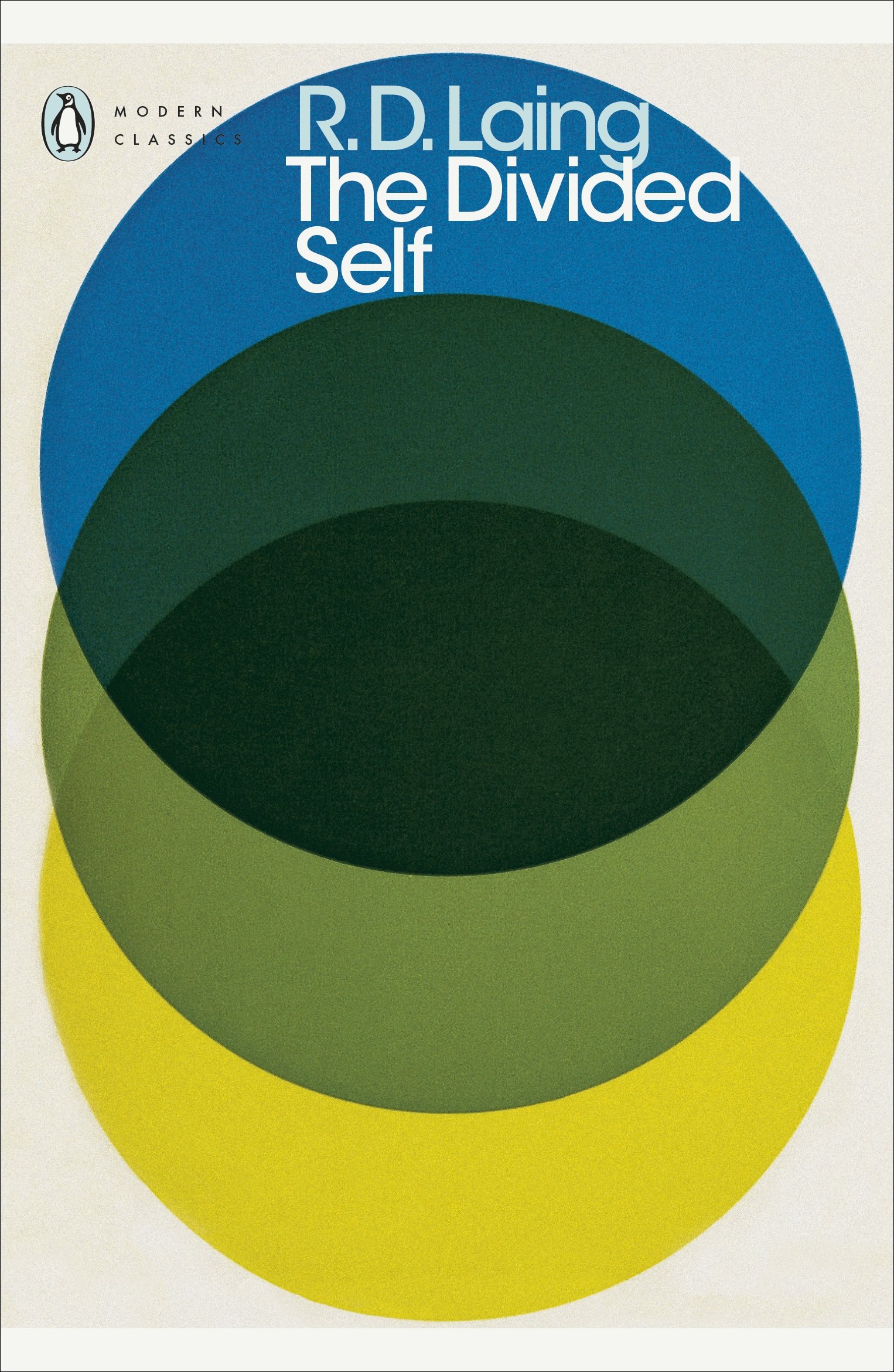 29. The Divided Self, by R.D. Laing. This book was published in 1960, written by a controversial Scottish psychiatrist. Laing’s main contribution was in the area of mental illness, where he argued that psychosis or schizophrenia were not just determined by ‘noise’ impossible to make sense of, but that were part of an unfolding process of the psyche along the lines of an inner journey. Madness, according to Laing, is a process of communicating distress and an attempt at catharsis, not merely a random and meaningless misfiring of neurons, and should be contextualized in that way in order to best help those suffering from it. The idea of ‘the divided self’ is how an alienated person constructs a mask, or false self, in order to deal with others and the fact that they struggle to experience the ‘realness’ of others, and their own self. Underlying all this is the suggestion that the mad person is close, in some ways, to the bona fide saint or mystic, in that both are extraordinarily sensitive souls. The mad person struggles with the unreality of their identity. The enlightened mystic understands that the unreality of the ego-identity means that they are, in reality, at home in the One mind of universal consciousness. The problem is that the mentally ill person loses their ego-identity before they have transcended it. And so they must spend a period of time—often very long—reconstructing their ego-identity. But their sensitivity is akin to the sensitivity of authentically great spiritual souls. However one may assess Laing’s ideas, his courage and compassion are obvious. There are few things more difficult in life than working directly with the insane.
29. The Divided Self, by R.D. Laing. This book was published in 1960, written by a controversial Scottish psychiatrist. Laing’s main contribution was in the area of mental illness, where he argued that psychosis or schizophrenia were not just determined by ‘noise’ impossible to make sense of, but that were part of an unfolding process of the psyche along the lines of an inner journey. Madness, according to Laing, is a process of communicating distress and an attempt at catharsis, not merely a random and meaningless misfiring of neurons, and should be contextualized in that way in order to best help those suffering from it. The idea of ‘the divided self’ is how an alienated person constructs a mask, or false self, in order to deal with others and the fact that they struggle to experience the ‘realness’ of others, and their own self. Underlying all this is the suggestion that the mad person is close, in some ways, to the bona fide saint or mystic, in that both are extraordinarily sensitive souls. The mad person struggles with the unreality of their identity. The enlightened mystic understands that the unreality of the ego-identity means that they are, in reality, at home in the One mind of universal consciousness. The problem is that the mentally ill person loses their ego-identity before they have transcended it. And so they must spend a period of time—often very long—reconstructing their ego-identity. But their sensitivity is akin to the sensitivity of authentically great spiritual souls. However one may assess Laing’s ideas, his courage and compassion are obvious. There are few things more difficult in life than working directly with the insane.
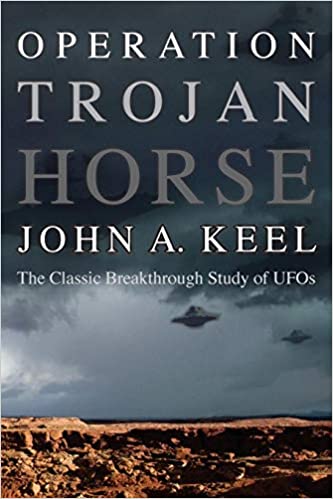 28. UFOs: Operation Trojan Horse, by John Keel. The UFO phenomenon is still widespread, if not quite as trendy as it was back in the late 20th century following ‘Project Blue Book’, all the blockbuster science-fiction movies, and The X-Files. John Keel was one of the more interesting paranormal and UFO researchers. He devised the theory of what he called ‘ultraterrestrials’, as distinct from extraterrestrials. An ultraterrestrial is an entity that is inter-dimensional, not from some other external planet as defined in the classic science-fiction depiction. In this regard Keel’s work is closely affiliated to the teachings of shamanism and ceremonial magic, which take for granted the existence of these invisible entities and the dimensions they inhabit. The highly liminal and amorphous nature of the UFO phenomena suggests to me that Keel was going in the right direction. These crafts are unlikely material objects conforming to our conceptions. They likely are, as Jung speculated, projections of the psyche (though Jung allowed for the possibility they may have a physical nature as well) or, as Keel maintains, denizens of other realms that are in front of our proverbial noses. UFOs: Operation Trojan Horse was published in 1970, but few books on this matter since then, apart from Jacques Vallee’s earlier and classic Passport to Magonia (1968), have dealt with it with such sensitive intelligence. Most UFO researchers get bogged down in the preoccupation of hunting for material artifacts to prove the UFO thesis (and the best they always get are anecdotal evidence such as eye-witness accounts or strange anomalies on radar reported by military pilots). Keel avoids that pitfall and looks deeper. At times one may find oneself questioning his sanity, but that is the case with many books of this nature. Keel was also responsible for the term ‘men in black’, and his 1975 book The Mothman Prophecies, based on legends of a demonic entity in West Virginia and the mythical association of it with the famous collapse of the Silver Bridge in 1967 resulting in 46 deaths, made him a well-known name in the field.
28. UFOs: Operation Trojan Horse, by John Keel. The UFO phenomenon is still widespread, if not quite as trendy as it was back in the late 20th century following ‘Project Blue Book’, all the blockbuster science-fiction movies, and The X-Files. John Keel was one of the more interesting paranormal and UFO researchers. He devised the theory of what he called ‘ultraterrestrials’, as distinct from extraterrestrials. An ultraterrestrial is an entity that is inter-dimensional, not from some other external planet as defined in the classic science-fiction depiction. In this regard Keel’s work is closely affiliated to the teachings of shamanism and ceremonial magic, which take for granted the existence of these invisible entities and the dimensions they inhabit. The highly liminal and amorphous nature of the UFO phenomena suggests to me that Keel was going in the right direction. These crafts are unlikely material objects conforming to our conceptions. They likely are, as Jung speculated, projections of the psyche (though Jung allowed for the possibility they may have a physical nature as well) or, as Keel maintains, denizens of other realms that are in front of our proverbial noses. UFOs: Operation Trojan Horse was published in 1970, but few books on this matter since then, apart from Jacques Vallee’s earlier and classic Passport to Magonia (1968), have dealt with it with such sensitive intelligence. Most UFO researchers get bogged down in the preoccupation of hunting for material artifacts to prove the UFO thesis (and the best they always get are anecdotal evidence such as eye-witness accounts or strange anomalies on radar reported by military pilots). Keel avoids that pitfall and looks deeper. At times one may find oneself questioning his sanity, but that is the case with many books of this nature. Keel was also responsible for the term ‘men in black’, and his 1975 book The Mothman Prophecies, based on legends of a demonic entity in West Virginia and the mythical association of it with the famous collapse of the Silver Bridge in 1967 resulting in 46 deaths, made him a well-known name in the field.
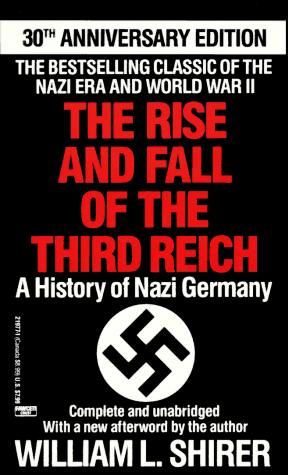 27. The Rise and Fall of the Third Reich, by William L. Shirer. This long book is the classic historical study of Nazi Germany, written by an American correspondent who was stationed in Germany in the late 1920s and 1930s and witnessed close-hand the rise of Hitler. The book is a detailed study aided by the release of mountains of documents following the end of the war and the subsequent war trials. I read this book in the mid-1990s and still consider it my prime education on one of the darkest eras of recorded human history. The internal politics and power struggles of the key Nazi figures, as well as the iron-clad grip of Hitler himself, is laid out in meticulous detail by Shirer. Especially interesting is the author's Afterward, written in his old age, in which he marvels at the book's extraordinary (and unexpected) success, especially given its length (almost 1,500 pages). That said, although the book was acclaimed by journalists, academic appraisal was divided. German historians in particular criticized it for conflating totalitarianism and the German psyche in general, with its underlying suggestion that Nazism was a product of German cultural roots, rather than an aberration rooted in totalitarianism, which in itself is not particular to Germans.
27. The Rise and Fall of the Third Reich, by William L. Shirer. This long book is the classic historical study of Nazi Germany, written by an American correspondent who was stationed in Germany in the late 1920s and 1930s and witnessed close-hand the rise of Hitler. The book is a detailed study aided by the release of mountains of documents following the end of the war and the subsequent war trials. I read this book in the mid-1990s and still consider it my prime education on one of the darkest eras of recorded human history. The internal politics and power struggles of the key Nazi figures, as well as the iron-clad grip of Hitler himself, is laid out in meticulous detail by Shirer. Especially interesting is the author's Afterward, written in his old age, in which he marvels at the book's extraordinary (and unexpected) success, especially given its length (almost 1,500 pages). That said, although the book was acclaimed by journalists, academic appraisal was divided. German historians in particular criticized it for conflating totalitarianism and the German psyche in general, with its underlying suggestion that Nazism was a product of German cultural roots, rather than an aberration rooted in totalitarianism, which in itself is not particular to Germans.
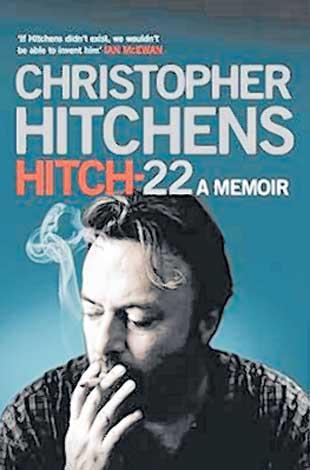 26. Hitch-22, by Christopher Hitchens. Hitchens, who died in 2011, was the epitome of the neurotic genius. Quirky, unhealthy (he chain smoked and drank heavily for most of his adult life), he was also one of the sharpest of wits in recent times, sort of a late 20th-early 21st century Oscar Wilde. He was a superb debater, almost impossible to defeat. Those who challenged him (and there were many) usually came off looking badly. Despite his considerable edge, he was basically a warm man, which made his relatively early death in his early 60s more poignant. As a writer, he was a giant, displaying a superb command of prose as well as vast learning. Hitchens was opinionated to put it mildly, but he formulated and expressed his views with such style and substance that one was inclined to admire his delivery as much or more than the content he transmitted. As an example, there is a video available on YouTube of Hitchens debating alongside Sam Harris against two rabbis on the issue of life after death. Some of Hitchens’ ideas as expressed in that debate are far from overwhelming, but the humor and panache with which he makes his points leads to one cheering for him even if holding to different viewpoints oneself. The earnest rabbis, though in some regards making more sense, come across as flat and dull compared to the rich quality of Hitchens’ mind. Even Sam Harris, one of the more lucid thinkers alive today, lacks Hitchens’ appeal. Hitch-22 is Hitchens’ autobiography, published shortly before his death. It is a book that makes the reader think and think some more, sure a sign as any for it deserving of inclusion here.
26. Hitch-22, by Christopher Hitchens. Hitchens, who died in 2011, was the epitome of the neurotic genius. Quirky, unhealthy (he chain smoked and drank heavily for most of his adult life), he was also one of the sharpest of wits in recent times, sort of a late 20th-early 21st century Oscar Wilde. He was a superb debater, almost impossible to defeat. Those who challenged him (and there were many) usually came off looking badly. Despite his considerable edge, he was basically a warm man, which made his relatively early death in his early 60s more poignant. As a writer, he was a giant, displaying a superb command of prose as well as vast learning. Hitchens was opinionated to put it mildly, but he formulated and expressed his views with such style and substance that one was inclined to admire his delivery as much or more than the content he transmitted. As an example, there is a video available on YouTube of Hitchens debating alongside Sam Harris against two rabbis on the issue of life after death. Some of Hitchens’ ideas as expressed in that debate are far from overwhelming, but the humor and panache with which he makes his points leads to one cheering for him even if holding to different viewpoints oneself. The earnest rabbis, though in some regards making more sense, come across as flat and dull compared to the rich quality of Hitchens’ mind. Even Sam Harris, one of the more lucid thinkers alive today, lacks Hitchens’ appeal. Hitch-22 is Hitchens’ autobiography, published shortly before his death. It is a book that makes the reader think and think some more, sure a sign as any for it deserving of inclusion here.
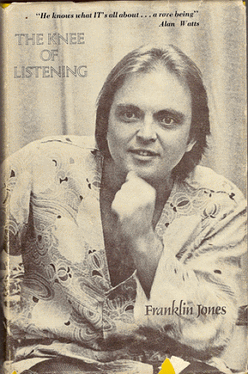 25. The Knee of Listening, by Franklin Jones (Adi Da Samraj). This book was originally published in 1973, and is essentially a memoir describing in lucid detail the spiritual awakening of the author. Franklin Jones was an American who apprenticed under the famed siddhi yogi Muktananda. He had his own radical awakening in his early 30s, and then embarked on a long and controversial career as a guru himself. He wrote prolifically and published dozens of books before his death in 2008, but this one remains his best. It is an exceptionally well articulated work taking the reader deep into the mind of an illumined mystic, and most importantly, how he got his illumination. I'm not entirely sure what happened to Jones in later years, when he began adopting name after name (he must have gone through a dozen name changes over the decades), but the quality of this strangely titled work has rarely been surpassed, in the genre of spiritual memoir.
25. The Knee of Listening, by Franklin Jones (Adi Da Samraj). This book was originally published in 1973, and is essentially a memoir describing in lucid detail the spiritual awakening of the author. Franklin Jones was an American who apprenticed under the famed siddhi yogi Muktananda. He had his own radical awakening in his early 30s, and then embarked on a long and controversial career as a guru himself. He wrote prolifically and published dozens of books before his death in 2008, but this one remains his best. It is an exceptionally well articulated work taking the reader deep into the mind of an illumined mystic, and most importantly, how he got his illumination. I'm not entirely sure what happened to Jones in later years, when he began adopting name after name (he must have gone through a dozen name changes over the decades), but the quality of this strangely titled work has rarely been surpassed, in the genre of spiritual memoir.
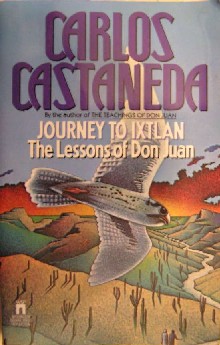 24. Journey to Ixtlan, by Carlos Castaneda. This was Castaneda’s third book, released in 1972. It is ‘dangerous’ to complacent thinking in that it describes in vivid detail altered states of consciousness experienced by the narrator without any usage of hallucinogenic entheogens, in contrast to his first two books (in which peyote and Jimson weed played significant parts). Most of Journey to Ixtlan involves Castaneda wandering in the deserts of Northern Mexico and the American southwest with his teacher, the old shaman Juan Matus (whom the author, in an homage to Cervantes, dubs ‘Don Juan’). These books by Castaneda, though initially presented as factual accounts of his time as a sorcerer’s apprentice, were largely dismissed by scholars in later decades as works of fiction, but for one who has truly grasped the spirit behind the Castaneda’s genius, it ultimately doesn’t matter. The dialogues between student and teacher in these pages is wondrous, and more compelling, even if at times simplistic, than the work of more sophisticated novelists, let alone academic anthropologists plowing the field. A classic chapter in Journey to Ixtlan involves don Juan telling Carlos the tale of when he met a ‘magical deer’ in a forest in Mexico. Don Juan says the deer was magical because it had no discernible routines, unlike the vast majority of humans and animals. This is one of these teachings that can easily be dismissed as a kind of New Age Taoism having little bearing to real life, but in fact there is more to it than meets the eye. One just needs to look a bit deeper, or as don Juan would say it, to ‘see’.
24. Journey to Ixtlan, by Carlos Castaneda. This was Castaneda’s third book, released in 1972. It is ‘dangerous’ to complacent thinking in that it describes in vivid detail altered states of consciousness experienced by the narrator without any usage of hallucinogenic entheogens, in contrast to his first two books (in which peyote and Jimson weed played significant parts). Most of Journey to Ixtlan involves Castaneda wandering in the deserts of Northern Mexico and the American southwest with his teacher, the old shaman Juan Matus (whom the author, in an homage to Cervantes, dubs ‘Don Juan’). These books by Castaneda, though initially presented as factual accounts of his time as a sorcerer’s apprentice, were largely dismissed by scholars in later decades as works of fiction, but for one who has truly grasped the spirit behind the Castaneda’s genius, it ultimately doesn’t matter. The dialogues between student and teacher in these pages is wondrous, and more compelling, even if at times simplistic, than the work of more sophisticated novelists, let alone academic anthropologists plowing the field. A classic chapter in Journey to Ixtlan involves don Juan telling Carlos the tale of when he met a ‘magical deer’ in a forest in Mexico. Don Juan says the deer was magical because it had no discernible routines, unlike the vast majority of humans and animals. This is one of these teachings that can easily be dismissed as a kind of New Age Taoism having little bearing to real life, but in fact there is more to it than meets the eye. One just needs to look a bit deeper, or as don Juan would say it, to ‘see’.
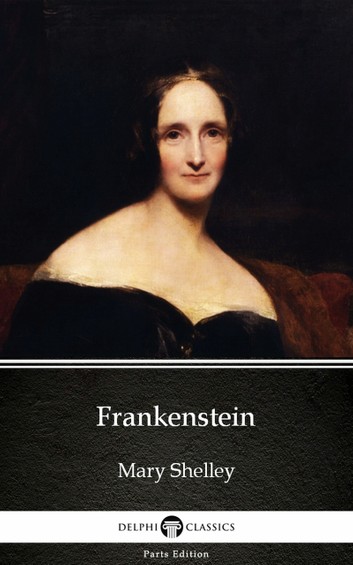 23. Frankenstein, by Mary Shelly. This novel, first published in 1818, was conceived and written by a 16-year-old girl, a fact many are not aware of. Some consider it the first quasi science-fiction novel. The idea for it was hatched when Mary and her husband, the poet Percy Shelley, were sitting around a fire one night along with the poet Lord Byron, making up ghost stories. This novel became the prototype of both the modern horror creature and technology run amuck. The story is unique in how its title—a name which refers to a fictional Swiss scientist (Victor Frankenstein) who creates a creature that he loses control of—long ago came to be confused with the creature itself.
23. Frankenstein, by Mary Shelly. This novel, first published in 1818, was conceived and written by a 16-year-old girl, a fact many are not aware of. Some consider it the first quasi science-fiction novel. The idea for it was hatched when Mary and her husband, the poet Percy Shelley, were sitting around a fire one night along with the poet Lord Byron, making up ghost stories. This novel became the prototype of both the modern horror creature and technology run amuck. The story is unique in how its title—a name which refers to a fictional Swiss scientist (Victor Frankenstein) who creates a creature that he loses control of—long ago came to be confused with the creature itself.
Mary Shelley initially experienced a block in her imagination when attempting to birth the story, and for several days was unable to come up with anything. One night she listened to her husband and Byron discussing the possibilities of galvanism and related matters. (Galvanism, a term coined in the late 18th century, referred to the idea of stimulating muscles via applying an electric current to them, and to the possibility of animating dead tissue via electricity). Shortly after, Shelley conceived of her idea of the story of a scientist who constructs a living creature from derelict organic parts. The outline of the story came to her in a series of visions while she lay in bed unable to sleep, having fallen into a light trance state.
Some have attempted to portray Frankenstein as the first science-fiction novel, although in fact the book barely qualifies as science-fiction, as there is no real attempt at ‘science’ anywhere in its text, even the ‘techno-babble’ science typical of the genre; it rather leaps straight to the end result, the creation of the monster, thereafter being one extended commentary on the results of such a creation. The subtitle of the book, The Modern Prometheus, refers to the Greek god (one of the Titans) who brought fire to humanity by stealing it from Olympus, an act for which he was severely punished by Zeus. Shelley did not originally set out to write Frankenstein with any serious intention to express esoteric ideas; she simply wanted to write a good horror story.
The novel, despite an initial mixed critical reception, was an immediate bestseller and grew to have lasting iconic influence. In addition, the connection between Frankenstein and the Western esoteric tradition, is clear. Shelley has the protagonist of her novel, Dr. Frankenstein, studying such major occult luminaries as Albertus Magnus, Agrippa, and Paracelsus. When Frankenstein sets about achieving his great creation (and ultimately, monster), he utilizes both science (chemistry) and alchemy. Shelley took this from Paracelsus’ actual attempts to create an artificial man.
There are several important conventional themes in Frankenstein:
- The creation of life and sentient intelligence by the human hand, employing science.
- The loss of control of this creation, and a general reflection on the dangers of science without adequate conscience.
- Reaction to appearances, and the power of perception to mold our experience. (Victor Frankenstein is initially repelled by the appearance of his creation, and cannot overcome this reaction, leading to his abandonment of the creature, and its subsequent desire to seek vengeance for this).
The esoteric themes in Frankenstein are also clear, if less obvious:
- The need to distinguish between the inner sciences (occultism and alchemy in particular) and the outer sciences (chemistry in particular), by not confusing domains of experience and consciousness.
- The esoteric meaning of the ‘golem’ and the ‘homunculus’.
- Overcoming mortality via the science of inner creation (the ‘Body of Light’).
- The Gnostic theme of flawed creation, via the Gnostic myth of the Demiurge who created the universe, and the passive role of the ‘true God’.
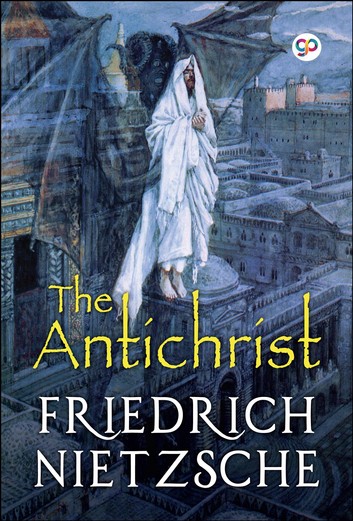 22. The Antichrist, by Fredrich Nietzsche. This was one of Nietzsche’s later works, written in 1888. The publication of it was delayed for seven years as the publishers feared its content would be too widely unacceptable. A key emphasis in the book is the theme of power, and, according to Nietzsche, the happiness power provides, alongside the ‘evil’ he associates with weakness. This was the book where he began speaking about his idea of ‘Will to Power’. In the book he tears into Christianity as a faith that is detrimental to the human spirit by its fixation on charity and safeguarding the weak. He disparages pity as a state that lowers vitality and works against natural instinctive forces that would seek to strengthen us. The entire book is largely a big wrecking ball aimed at traditional religious values and the decadence that Nietzsche believed they had fostered. The cleverness and vehemence of the writing unfortunately made it ripe for hijacking in future decades by those with political agendas (such as some of the Nazis, though it is not believed that Hitler, for one, ever made a serious study of Nietzsche, who almost certainly would have rejected his messianic zeal). If you read The Antichrist with the understanding that it was written half a century before Nazi Germany and had no association with its ideology, then the book can operate as a powerful agent for de-conditioning one of religious programming. I read this book when I was around 17, and though I did not grasp all of it at that tender age, it did begin the process of freeing me from the fear-based conditioning of my Christian roots. I was not raised in a religious household (my father was a nominal Catholic, my mother a largely irreligious Protestant, they never bothered to baptize me, and I went to Sunday School about six times as a boy). Nevertheless, I was raised in a largely Catholic city in the 1960s (Montreal) where the Old Testament was read to us every day in our morning school class. These Bible stories were always accompanied by the threats of needing to heed the word of the Lord in order to avoid the eternal fire and brimstone. When children are indoctrinated in this stuff it can have lifelong effects. Books like The Antichrist are dangerous for that conditioning, but good for breaking free of it.
22. The Antichrist, by Fredrich Nietzsche. This was one of Nietzsche’s later works, written in 1888. The publication of it was delayed for seven years as the publishers feared its content would be too widely unacceptable. A key emphasis in the book is the theme of power, and, according to Nietzsche, the happiness power provides, alongside the ‘evil’ he associates with weakness. This was the book where he began speaking about his idea of ‘Will to Power’. In the book he tears into Christianity as a faith that is detrimental to the human spirit by its fixation on charity and safeguarding the weak. He disparages pity as a state that lowers vitality and works against natural instinctive forces that would seek to strengthen us. The entire book is largely a big wrecking ball aimed at traditional religious values and the decadence that Nietzsche believed they had fostered. The cleverness and vehemence of the writing unfortunately made it ripe for hijacking in future decades by those with political agendas (such as some of the Nazis, though it is not believed that Hitler, for one, ever made a serious study of Nietzsche, who almost certainly would have rejected his messianic zeal). If you read The Antichrist with the understanding that it was written half a century before Nazi Germany and had no association with its ideology, then the book can operate as a powerful agent for de-conditioning one of religious programming. I read this book when I was around 17, and though I did not grasp all of it at that tender age, it did begin the process of freeing me from the fear-based conditioning of my Christian roots. I was not raised in a religious household (my father was a nominal Catholic, my mother a largely irreligious Protestant, they never bothered to baptize me, and I went to Sunday School about six times as a boy). Nevertheless, I was raised in a largely Catholic city in the 1960s (Montreal) where the Old Testament was read to us every day in our morning school class. These Bible stories were always accompanied by the threats of needing to heed the word of the Lord in order to avoid the eternal fire and brimstone. When children are indoctrinated in this stuff it can have lifelong effects. Books like The Antichrist are dangerous for that conditioning, but good for breaking free of it.
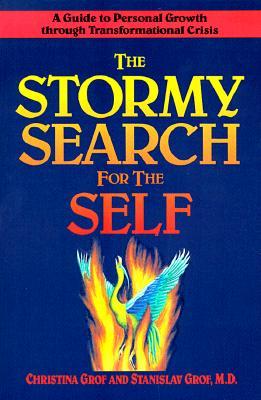 21. The Stormy Search for the Self (1990), by Stanislav and Christina Grof. Stan Grof is a legendary Czech-American psychiatrist, still writing and teaching in 2020 at age 89, who was one of the main founders of transpersonal psychology. He is a prolific author and an authentic representative of the school of wisdom best defined as ‘perennial’. Additionally, he has been highly adventurous and experimental, not just a detached scholar, ranging broadly through the various fields of transpersonal research, including non-dualism, psychedelics, shamanism, and afterlife/consciousness studies. In The Stormy Search for the Self, co-authored with his wife Christina, he ventured into the difficult area of ‘spiritual emergency’, which deals with the various ways in which spiritual practices can go wrong, or at least, can lead to surprisingly difficult hell realms. The subtitle of the book, A Guide to Personal Growth Through Transformative Crisis, says it all. The main theme of the book is how spiritual practices can result in rapid changes, which sometimes result in a crisis that the seeker feels overwhelmed by. The book centers on the importance of recognizing the deeper value of these kinds of crises, and the need to integrate their lessons rather than merely pathologizing them.
21. The Stormy Search for the Self (1990), by Stanislav and Christina Grof. Stan Grof is a legendary Czech-American psychiatrist, still writing and teaching in 2020 at age 89, who was one of the main founders of transpersonal psychology. He is a prolific author and an authentic representative of the school of wisdom best defined as ‘perennial’. Additionally, he has been highly adventurous and experimental, not just a detached scholar, ranging broadly through the various fields of transpersonal research, including non-dualism, psychedelics, shamanism, and afterlife/consciousness studies. In The Stormy Search for the Self, co-authored with his wife Christina, he ventured into the difficult area of ‘spiritual emergency’, which deals with the various ways in which spiritual practices can go wrong, or at least, can lead to surprisingly difficult hell realms. The subtitle of the book, A Guide to Personal Growth Through Transformative Crisis, says it all. The main theme of the book is how spiritual practices can result in rapid changes, which sometimes result in a crisis that the seeker feels overwhelmed by. The book centers on the importance of recognizing the deeper value of these kinds of crises, and the need to integrate their lessons rather than merely pathologizing them.
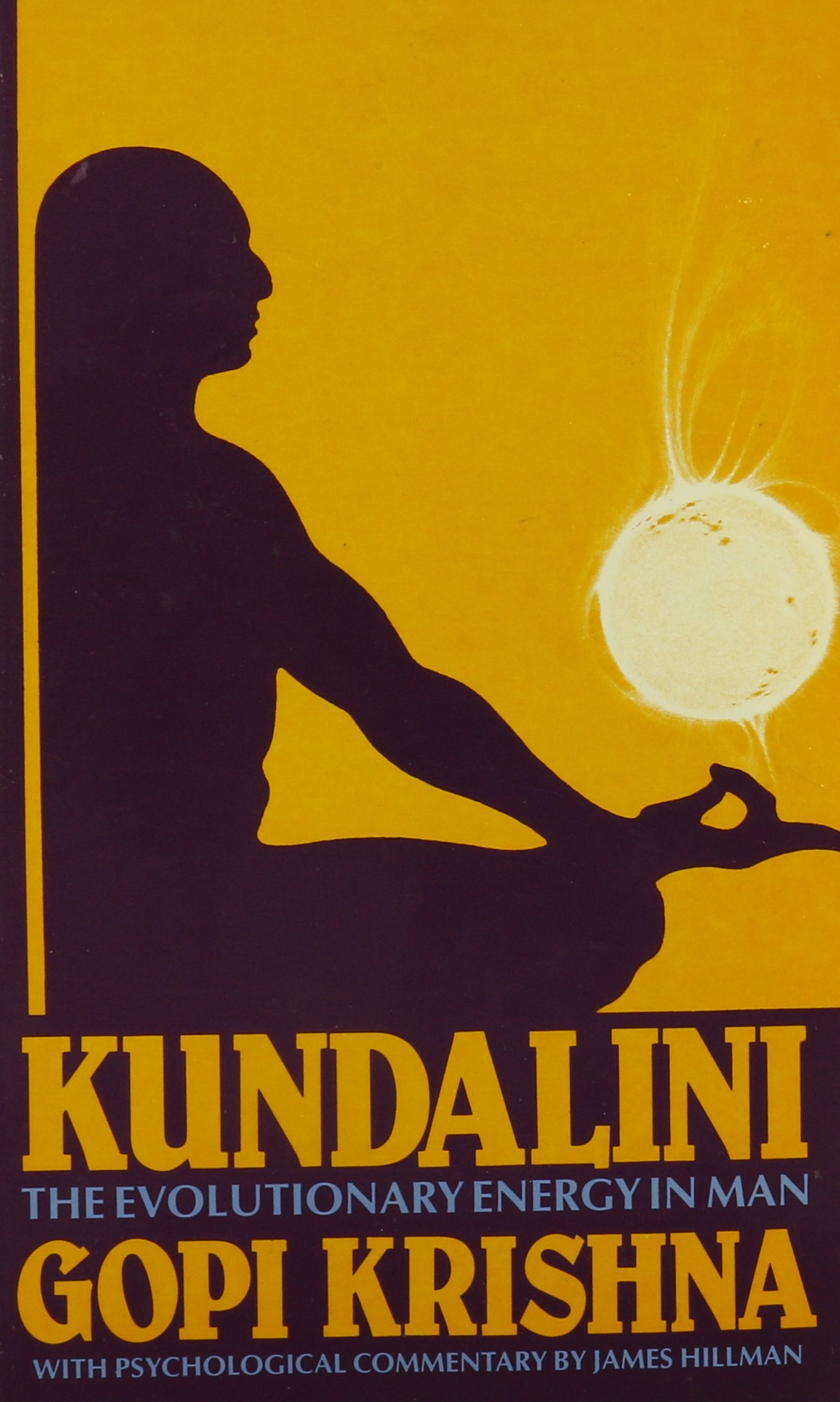 20. Kundalini: The Evolutionary Energy in Man (1967), by Gopi Krishna. This is the famous work that preceded the Grof’s work on the topic of spiritual emergency. Gopi Krishna (1903-1984) was a Kashmiri yogi and mystic who wrote a brutally honest and harrowing account of his experiments with prematurely and disastrously awakening the ‘kundalini’ force, via sustained meditation, in India in the early 20th century, resulting in years of borderline psychotic states he had to endure. I read this book in my early 20s, shortly after my own difficult and harrowing experiences with premature kundalini awakening, so Gopi Krishna’s work has always held a special place for me. For one who has not passed through the fires of these kinds of experiences—sort of the spiritual equivalent of a bad drug trip—it can be hard to appreciate what he (and Grof) is talking about. I personally do not claim to understand why a few have to go through these experiences and why most do not, but it is nonetheless consoling (if nothing else) to know that one’s experience of hell was not that unique after all. Apparently this book was partly responsible for the interest in kundalini yoga that became so fashionable in the West in the late 20th century, but one can only hope that most who practice it are spared the accounts described in parts of this classic book.
20. Kundalini: The Evolutionary Energy in Man (1967), by Gopi Krishna. This is the famous work that preceded the Grof’s work on the topic of spiritual emergency. Gopi Krishna (1903-1984) was a Kashmiri yogi and mystic who wrote a brutally honest and harrowing account of his experiments with prematurely and disastrously awakening the ‘kundalini’ force, via sustained meditation, in India in the early 20th century, resulting in years of borderline psychotic states he had to endure. I read this book in my early 20s, shortly after my own difficult and harrowing experiences with premature kundalini awakening, so Gopi Krishna’s work has always held a special place for me. For one who has not passed through the fires of these kinds of experiences—sort of the spiritual equivalent of a bad drug trip—it can be hard to appreciate what he (and Grof) is talking about. I personally do not claim to understand why a few have to go through these experiences and why most do not, but it is nonetheless consoling (if nothing else) to know that one’s experience of hell was not that unique after all. Apparently this book was partly responsible for the interest in kundalini yoga that became so fashionable in the West in the late 20th century, but one can only hope that most who practice it are spared the accounts described in parts of this classic book.
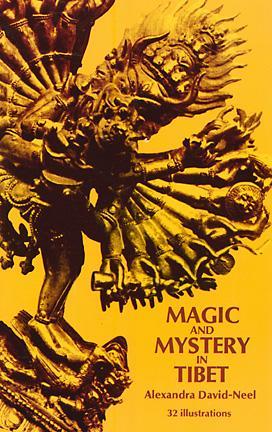 19. Magic and Mystery in Tibet, by Alexandra David-Neel. The author of this book, a renowned French woman who died in 1969 at the age of 101 and was among the first Westerners to penetrate into the heartlands of Tibet, embraced Tibetan Buddhism and wrote several accounts of her journeys. This one is probably her most famous. In it she describes the phenomenon of the tulpa, an entity created out of pure thought-energy by a trained lama or mystic. The idea of the tulpa is also recognized in Western occultism and is an interesting area of study as it ventures into those mysterious domains that intersect between legitimate paranormal studies and potential psychosis. In the book David-Neel manages to balance vivid descriptions of extraordinary siddhis (psychic powers) by trained mystics and monks, with a heartfelt appreciation of both Tibetan culture and the state religion prior to the Chinese annexation of 1959. This book was published in 1929, when Tibet was largely a mystery to Westerners, and now, a century later, it still retains at least some of that mystery, a remarkable testament to huge mountain ranges as much as oppressive Chinese rule.
19. Magic and Mystery in Tibet, by Alexandra David-Neel. The author of this book, a renowned French woman who died in 1969 at the age of 101 and was among the first Westerners to penetrate into the heartlands of Tibet, embraced Tibetan Buddhism and wrote several accounts of her journeys. This one is probably her most famous. In it she describes the phenomenon of the tulpa, an entity created out of pure thought-energy by a trained lama or mystic. The idea of the tulpa is also recognized in Western occultism and is an interesting area of study as it ventures into those mysterious domains that intersect between legitimate paranormal studies and potential psychosis. In the book David-Neel manages to balance vivid descriptions of extraordinary siddhis (psychic powers) by trained mystics and monks, with a heartfelt appreciation of both Tibetan culture and the state religion prior to the Chinese annexation of 1959. This book was published in 1929, when Tibet was largely a mystery to Westerners, and now, a century later, it still retains at least some of that mystery, a remarkable testament to huge mountain ranges as much as oppressive Chinese rule.
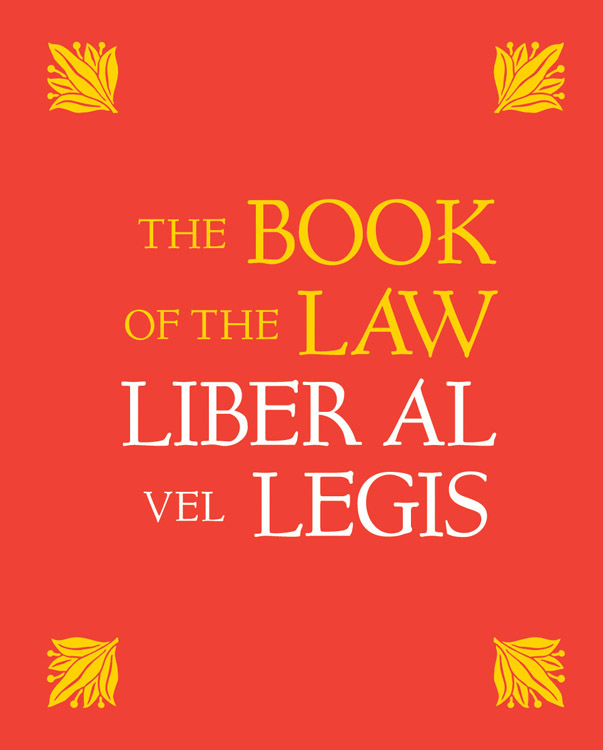 18. The Book of the Law, by Aleister Crowley. One might assume that Crowley’s magnum opus, Magick: Liber ABA, Book 4, should be listed if any of his works is to be listed, but I’m inclined to go with his short work of bizarre poetic prophecy, regarded by his devoted followers as sacred scripture, and known by everyone else familiar with the Beast’s life as The Book of the Law. This is claimed to be an ‘inspired’ work, dictated to him by Aiwass, his 'Holy Guardian Angel' (while he sat in a hotel room in Cairo in 1904). Or by the higher part of his mind. Or by just him in an altered state. However one views it, the strange writing itself is interesting and original and never dull—just like its author.
18. The Book of the Law, by Aleister Crowley. One might assume that Crowley’s magnum opus, Magick: Liber ABA, Book 4, should be listed if any of his works is to be listed, but I’m inclined to go with his short work of bizarre poetic prophecy, regarded by his devoted followers as sacred scripture, and known by everyone else familiar with the Beast’s life as The Book of the Law. This is claimed to be an ‘inspired’ work, dictated to him by Aiwass, his 'Holy Guardian Angel' (while he sat in a hotel room in Cairo in 1904). Or by the higher part of his mind. Or by just him in an altered state. However one views it, the strange writing itself is interesting and original and never dull—just like its author.
17. Being and Nothingness (1945), by Jean-Paul Sartre. This book is considered a key work of existentialist philosophy, the school of thought generally considered to have been initiated by the great Danish philosophy Soren Kierkegaard (1813-1855), and developed by Schopenhauer, Nietzsche, Heidegger and Sartre, as well as literary figures such as Dostoyevsky. 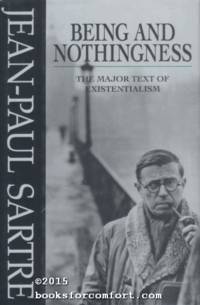 The central concern of existentialism is human freedom, and the main existential premise is that mere theories of reality, be they scientific, religious, or philosophical, fail to adequately address human nature and human experience. (This was in part a reaction to Hegel’s highly abstract philosophy, which had become very influential in the mid-19th century). Similar to the ideas of the Romantics, existentialism puts emphasis on the notion of being truly authentic, the echo of Shakespeare’s ‘to thine own self be true’, echoed by Nietzsche’s ‘become what you are’. Human fulfillment lies in fully exercising one’s individuality, its uniqueness, and in both discovering and manifesting that individual uniqueness. The emphasis is on living both passionately and sincerely, free of the impositions of others or moral notions of how one ‘should’ be and ‘should’ live. This idea has been summarized as ‘existence precedes essence’, meaning that how we live (existence) takes precedence over abstract categories from theoretical systems that seek to define us (essence). In this light, actions become crucial in determining identity—to act nobly is to ‘be noble’, to act unkindly is to ‘be unkind’, an idea that makes the individual responsible for their acts (as opposed to faulting other ‘essence’ factors, such as environment, genetics, or even God, etc.). As Sartre wrote,
The central concern of existentialism is human freedom, and the main existential premise is that mere theories of reality, be they scientific, religious, or philosophical, fail to adequately address human nature and human experience. (This was in part a reaction to Hegel’s highly abstract philosophy, which had become very influential in the mid-19th century). Similar to the ideas of the Romantics, existentialism puts emphasis on the notion of being truly authentic, the echo of Shakespeare’s ‘to thine own self be true’, echoed by Nietzsche’s ‘become what you are’. Human fulfillment lies in fully exercising one’s individuality, its uniqueness, and in both discovering and manifesting that individual uniqueness. The emphasis is on living both passionately and sincerely, free of the impositions of others or moral notions of how one ‘should’ be and ‘should’ live. This idea has been summarized as ‘existence precedes essence’, meaning that how we live (existence) takes precedence over abstract categories from theoretical systems that seek to define us (essence). In this light, actions become crucial in determining identity—to act nobly is to ‘be noble’, to act unkindly is to ‘be unkind’, an idea that makes the individual responsible for their acts (as opposed to faulting other ‘essence’ factors, such as environment, genetics, or even God, etc.). As Sartre wrote,
What do we mean by saying that existence precedes essence? We mean that man first of all exists, encounters himself, surges up in the world—and defines himself afterwards. If man as the existentialist sees him is not definable, it is because to begin with he is nothing. He will not be anything until later, and then he will be what he makes of himself...that is the first principle of existentialism.
Sartre’s main argument, as summed in his landmark work Being and Nothingness, is that there are two forms of existence: that of unconscious objects, and that of consciousness itself. The key attribute with a conscious being is that it is capable of conceiving of negatives, i.e., what is not. When we can imagine ‘nothingness’ (what is not), as well as what is, then we can also imagine possibilities. For example, in your living room you have certain furniture. Because you can imagine this same living room as being empty of furniture, you therefore can imagine it being filled with new furniture. Only the ability to conceive of what is not (not this furniture), allows for the ability to conceive of something new. The point of Sartre’s argument is humans are capable of determining their future and as such, consciousness allows for the possibility of genuine freedom. More, a human is whatever they act; that is, our actions determine what we become. Finally, the character of a person is the sum of all their previous decisions and acts.
This view came under fire by those who countered that freedom is limited by many restraints, be they social, environmental, etc., and by those who maintain that free will is entirely an illusion, that all so-called choices are determined by previous factors. But Sartre’s views, being strong representations of the existential school of thought, are historically important as part of the overall process of liberation from limitations (of endless variety) that humans have always sought. Existentialism influenced modern psychotherapy by emphasizing that personal meaning is arrived at via decision-making (echoed in the work of Adler and Assagioli), and moreover, one that was oriented toward the future, not the past. In order to grapple with the fear of the unknown (anxiety) brought about by examining the future, a quality of robustness (or ‘hardiness’ as it was often called) is needed, leading to a sense of expansiveness and greater sense of meaningfulness of one’s life. Those who choose the past (avoiding the future) have difficulty coping with the stress that accompanies change or possible change, and became ‘small’ and contracted within, prone to despair, depression, and a sense of meaninglessness. For Sartre and the existentialists, life consists in moving forward, becoming, as opposed to escaping into the safely ‘known’ past.
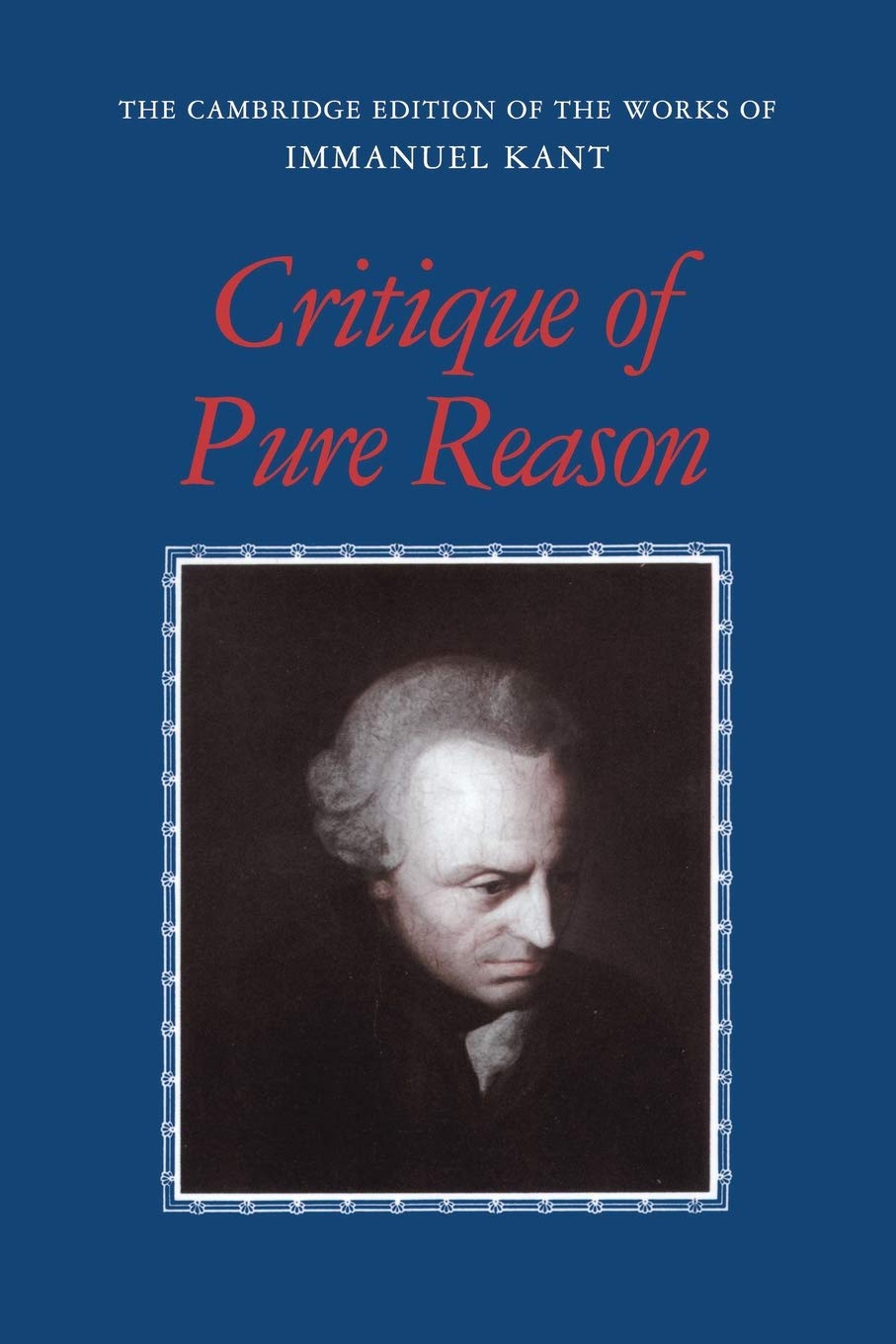 16. Critique of Pure Reason (1781), by Immanuel Kant. This is the magnum opus of the great 18th century German philosopher. It is one of those books that is generally easier to tackle by first reading someone's else's account of it (preferably someone who knows what they're talking about). This is unquestionably one of the densest books ever written, but also one of the most brilliant, however much some modern academics may be inclined to see it as a stepping stone in the progress of Western thought. Kant was a revolutionary thinker who was also wildly ambitious, seeking to reconcile the hard truths of physical science with the great moral dilemmas of psyche and soul. Critique of Pure Reason is just what it promises to be, a study of reason itself, and all the ways in which the world effectively conforms to our mental structures (rather than the classic view that our mind is shaped by our senses and the world). In presenting a tight logical system for explaining this fundamental idea, Kant effectively turned much of classical thinking on its head, and paved the way for the modern views of the power of thought and consciousness to define the universe we experience and at least appear to live in. I often recommend people to at least try reading this book. If successful in wading through even half of it, practically all others works by practically all other authors will seem easy to grasp in contrast. Kant is the intellectual equivalent of heavy weight lifting in the gym.
16. Critique of Pure Reason (1781), by Immanuel Kant. This is the magnum opus of the great 18th century German philosopher. It is one of those books that is generally easier to tackle by first reading someone's else's account of it (preferably someone who knows what they're talking about). This is unquestionably one of the densest books ever written, but also one of the most brilliant, however much some modern academics may be inclined to see it as a stepping stone in the progress of Western thought. Kant was a revolutionary thinker who was also wildly ambitious, seeking to reconcile the hard truths of physical science with the great moral dilemmas of psyche and soul. Critique of Pure Reason is just what it promises to be, a study of reason itself, and all the ways in which the world effectively conforms to our mental structures (rather than the classic view that our mind is shaped by our senses and the world). In presenting a tight logical system for explaining this fundamental idea, Kant effectively turned much of classical thinking on its head, and paved the way for the modern views of the power of thought and consciousness to define the universe we experience and at least appear to live in. I often recommend people to at least try reading this book. If successful in wading through even half of it, practically all others works by practically all other authors will seem easy to grasp in contrast. Kant is the intellectual equivalent of heavy weight lifting in the gym.
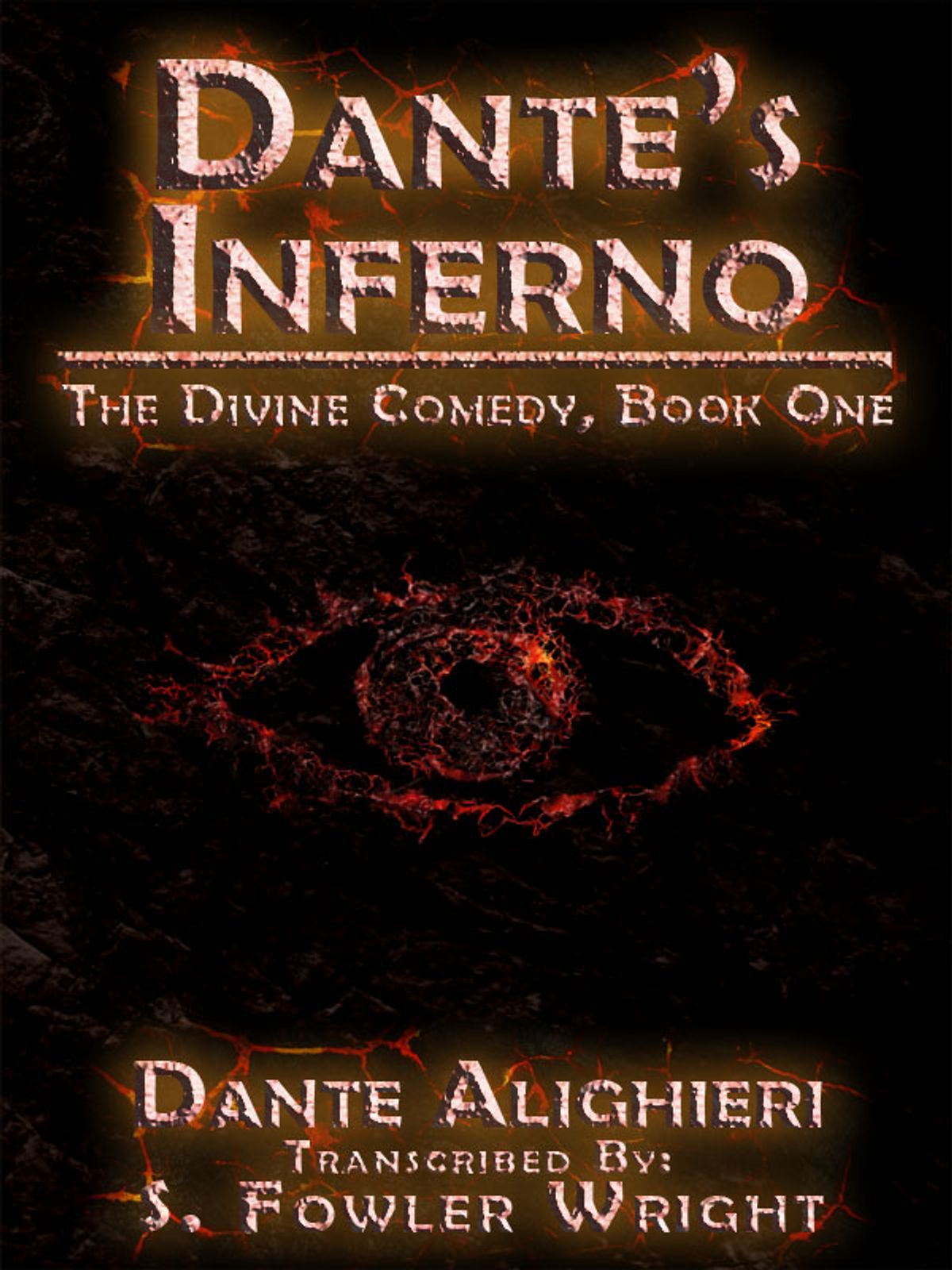 15. Dante’s Inferno. The Inferno is the first part of the early 14th century monumental poem known as The Divine Comedy (or simply Comedy in Dante’s time). It took Dante twelve years to write it. Not only is it still one of the greatest works of world literature, it is also a profound contemplation on the various stages undergone by a soul in its journey through existence. The first part, Inferno, represents the soul’s experience of sin (or the wandering away from truth) and the need to overcome it. The second, Purgatorio, deals with the necessary self-examination and discipline needed by all who seek transformation. And the third, Paradiso, deals with the soul’s final awakening to the highest orders of reality (God). The Divine Comedy was remarkable for its time in that it was written in the common language, not the Latin typically used by writers dealing with lofty issues. Dante thus served as one of the great ‘bridges’ between mystical, visionary, and philosophical thinking of the highest order, and the everyday man or woman who otherwise might have had no direct literary access to such thought. I read through this work while doing my university English major, and naturally it was the first book, Inferno, that grabbed my attention and that seemed the most insightful into the human condition. Inferno tackles the various classifications of ‘sin’, and the punishments resulting from becoming entrapped by them. The Hell realm is described by Dante as being structured into nine concentric circles, each dealing with the consequences resulting from the various ways in which the soul goes astray and indulges in vice, malice, fraud, violence, and so on. The key piece involves the need of the soul to both recognize, and reject, these various ways of wandering away from God.
15. Dante’s Inferno. The Inferno is the first part of the early 14th century monumental poem known as The Divine Comedy (or simply Comedy in Dante’s time). It took Dante twelve years to write it. Not only is it still one of the greatest works of world literature, it is also a profound contemplation on the various stages undergone by a soul in its journey through existence. The first part, Inferno, represents the soul’s experience of sin (or the wandering away from truth) and the need to overcome it. The second, Purgatorio, deals with the necessary self-examination and discipline needed by all who seek transformation. And the third, Paradiso, deals with the soul’s final awakening to the highest orders of reality (God). The Divine Comedy was remarkable for its time in that it was written in the common language, not the Latin typically used by writers dealing with lofty issues. Dante thus served as one of the great ‘bridges’ between mystical, visionary, and philosophical thinking of the highest order, and the everyday man or woman who otherwise might have had no direct literary access to such thought. I read through this work while doing my university English major, and naturally it was the first book, Inferno, that grabbed my attention and that seemed the most insightful into the human condition. Inferno tackles the various classifications of ‘sin’, and the punishments resulting from becoming entrapped by them. The Hell realm is described by Dante as being structured into nine concentric circles, each dealing with the consequences resulting from the various ways in which the soul goes astray and indulges in vice, malice, fraud, violence, and so on. The key piece involves the need of the soul to both recognize, and reject, these various ways of wandering away from God.
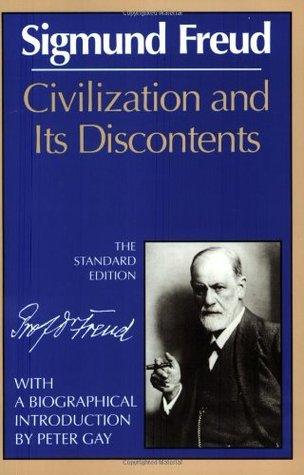 14. Civilization and its Discontents, by Sigmund Freud. Sometime in the latter half of the 20th century it became fashionable to discount or even disparage Freud, although few who did so understood exactly why that should be so. On the other hand, when the accomplished literary critic Harold Bloom classified Freud as one the wisest men in history, he was likely closer to the truth. Much of Freud’s psychoanalytic theory is now regarded as obsolete or surpassed, but many of his ideas remain sound and his genius in recognizing the deeper factors behind what makes a person tick were legitimately revolutionary. His whole work lay in tackling the unconscious mind, and in exposing its power and influence in both the everyday life of the individual, and in civilization as a whole. He authored a number of important works, but it was in Civilization and its Discontents, published in 1930 when he was in his mid-70s, where he zeroed in specifically on the matter of the contrast between the individual and his or her desires and needs, and the needs of society collectively. This contrast sets up a tension that leads to the ‘discontent’ of the individual. The direct translation of the original German title of the book is ‘The Uneasiness of Civilization’, which is more suggestive of what Freud is getting at. Part of his thesis involves the needs of society to enforce conformity and the denial or repression of passions and instincts. This clashes with the individual’s natural pull to freedom of expression and instinct. Examples of this are the individual desire for sexual gratification and aggressive action against authority, impulses necessary blocked by societal laws, leading the various neuroses associated with repression and denial.
14. Civilization and its Discontents, by Sigmund Freud. Sometime in the latter half of the 20th century it became fashionable to discount or even disparage Freud, although few who did so understood exactly why that should be so. On the other hand, when the accomplished literary critic Harold Bloom classified Freud as one the wisest men in history, he was likely closer to the truth. Much of Freud’s psychoanalytic theory is now regarded as obsolete or surpassed, but many of his ideas remain sound and his genius in recognizing the deeper factors behind what makes a person tick were legitimately revolutionary. His whole work lay in tackling the unconscious mind, and in exposing its power and influence in both the everyday life of the individual, and in civilization as a whole. He authored a number of important works, but it was in Civilization and its Discontents, published in 1930 when he was in his mid-70s, where he zeroed in specifically on the matter of the contrast between the individual and his or her desires and needs, and the needs of society collectively. This contrast sets up a tension that leads to the ‘discontent’ of the individual. The direct translation of the original German title of the book is ‘The Uneasiness of Civilization’, which is more suggestive of what Freud is getting at. Part of his thesis involves the needs of society to enforce conformity and the denial or repression of passions and instincts. This clashes with the individual’s natural pull to freedom of expression and instinct. Examples of this are the individual desire for sexual gratification and aggressive action against authority, impulses necessary blocked by societal laws, leading the various neuroses associated with repression and denial.
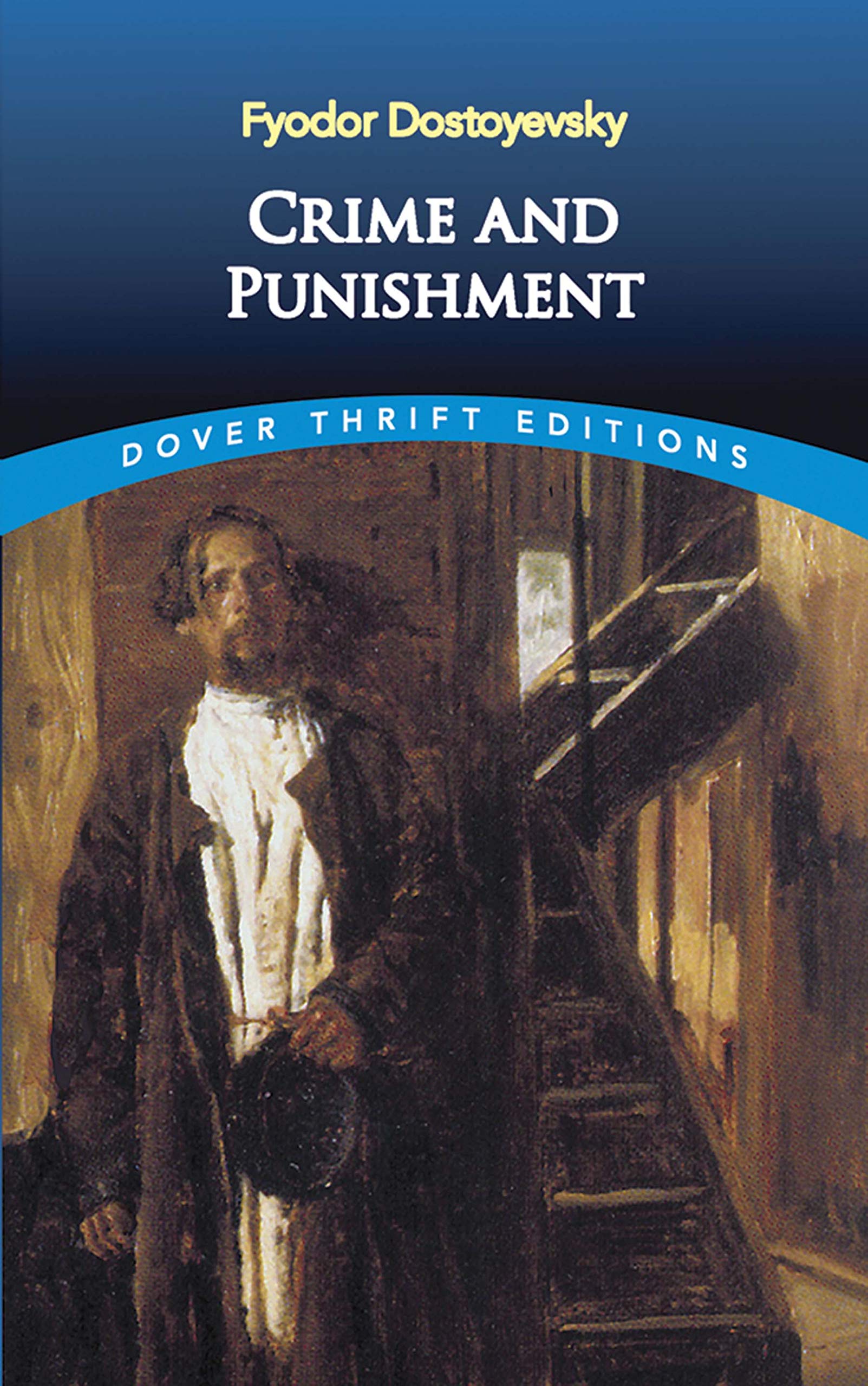 13. Crime and Punishment, by Fyodor Dostoyevsky. One of the first major works by the great 19th century Russian novelist. This was one of the very first long novels I ever read, at around age 16. Also brilliant is Dostoyevsky’s novella Notes from Underground, and needless to say, his masterpiece The Brothers Karamazov (my own memoir, which I’ve been slowly working on over the years, has the working title of Notes from the Growth Underground, inspired, obviously, by Dostoyevsky). Crime and Punishment was published in Russia in 1866. Its protagonist, a young man named Raskolnikov, an ex-law student who is broke and living in a tiny room in St. Petersburg, carries out the planned murder of an elderly pawnbroker, as well as her half-sister, who was in the wrong place at the wrong time. The rest of the long novel is a brilliant treatment of a man wracked by fear and guilt, as he tries, largely successfully, to evade the police investigation. In the end he confesses, and while serving his sentence in Siberia, comes to a deeper realization of conscience under the influence of a woman.
13. Crime and Punishment, by Fyodor Dostoyevsky. One of the first major works by the great 19th century Russian novelist. This was one of the very first long novels I ever read, at around age 16. Also brilliant is Dostoyevsky’s novella Notes from Underground, and needless to say, his masterpiece The Brothers Karamazov (my own memoir, which I’ve been slowly working on over the years, has the working title of Notes from the Growth Underground, inspired, obviously, by Dostoyevsky). Crime and Punishment was published in Russia in 1866. Its protagonist, a young man named Raskolnikov, an ex-law student who is broke and living in a tiny room in St. Petersburg, carries out the planned murder of an elderly pawnbroker, as well as her half-sister, who was in the wrong place at the wrong time. The rest of the long novel is a brilliant treatment of a man wracked by fear and guilt, as he tries, largely successfully, to evade the police investigation. In the end he confesses, and while serving his sentence in Siberia, comes to a deeper realization of conscience under the influence of a woman.
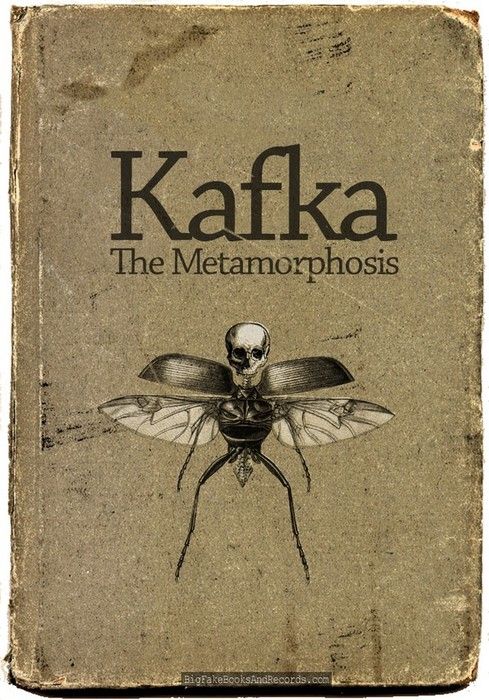 12. The Metamorphosis, by Franz Kafka. A strange short story written by one of the strangest novelists ever. Kafka, who died in 1924 at just 40 years of age, was not well recognized in his lifetime (a common occurrence with paradigm-creators), but became over subsequent decades a writer widely admired and considered a master of the absurd, while at the same time providing trenchant observations on anxiety, bizarre predicaments, and social alienation, themes fundamental to the human condition. In The Metamorphosis he details the story of one Gregor Samsa, a young man who is a traveling salesman supporting his sister and parents. One morning Gregor wakes up to realize that he has transformed—metamorphosed—into a ‘monstrous vermin’ (understood to be a giant insect, likely a beetle or roach). The rest of the story carries on with him now as this insect, his having to adapt to that, and his family having to adapt to it as well. That Kafka could write about such seeming absurdities, and do it with great style and substance (the story is full of psychological and sociological nuance, as well as being lyrical art in itself), contributed in part to the term ‘Kafkaesque’ entering the English language, referring to a situation that is hopelessly complex and illogical, one step shy of madness, and yet deeply revealing of the human condition.
12. The Metamorphosis, by Franz Kafka. A strange short story written by one of the strangest novelists ever. Kafka, who died in 1924 at just 40 years of age, was not well recognized in his lifetime (a common occurrence with paradigm-creators), but became over subsequent decades a writer widely admired and considered a master of the absurd, while at the same time providing trenchant observations on anxiety, bizarre predicaments, and social alienation, themes fundamental to the human condition. In The Metamorphosis he details the story of one Gregor Samsa, a young man who is a traveling salesman supporting his sister and parents. One morning Gregor wakes up to realize that he has transformed—metamorphosed—into a ‘monstrous vermin’ (understood to be a giant insect, likely a beetle or roach). The rest of the story carries on with him now as this insect, his having to adapt to that, and his family having to adapt to it as well. That Kafka could write about such seeming absurdities, and do it with great style and substance (the story is full of psychological and sociological nuance, as well as being lyrical art in itself), contributed in part to the term ‘Kafkaesque’ entering the English language, referring to a situation that is hopelessly complex and illogical, one step shy of madness, and yet deeply revealing of the human condition.
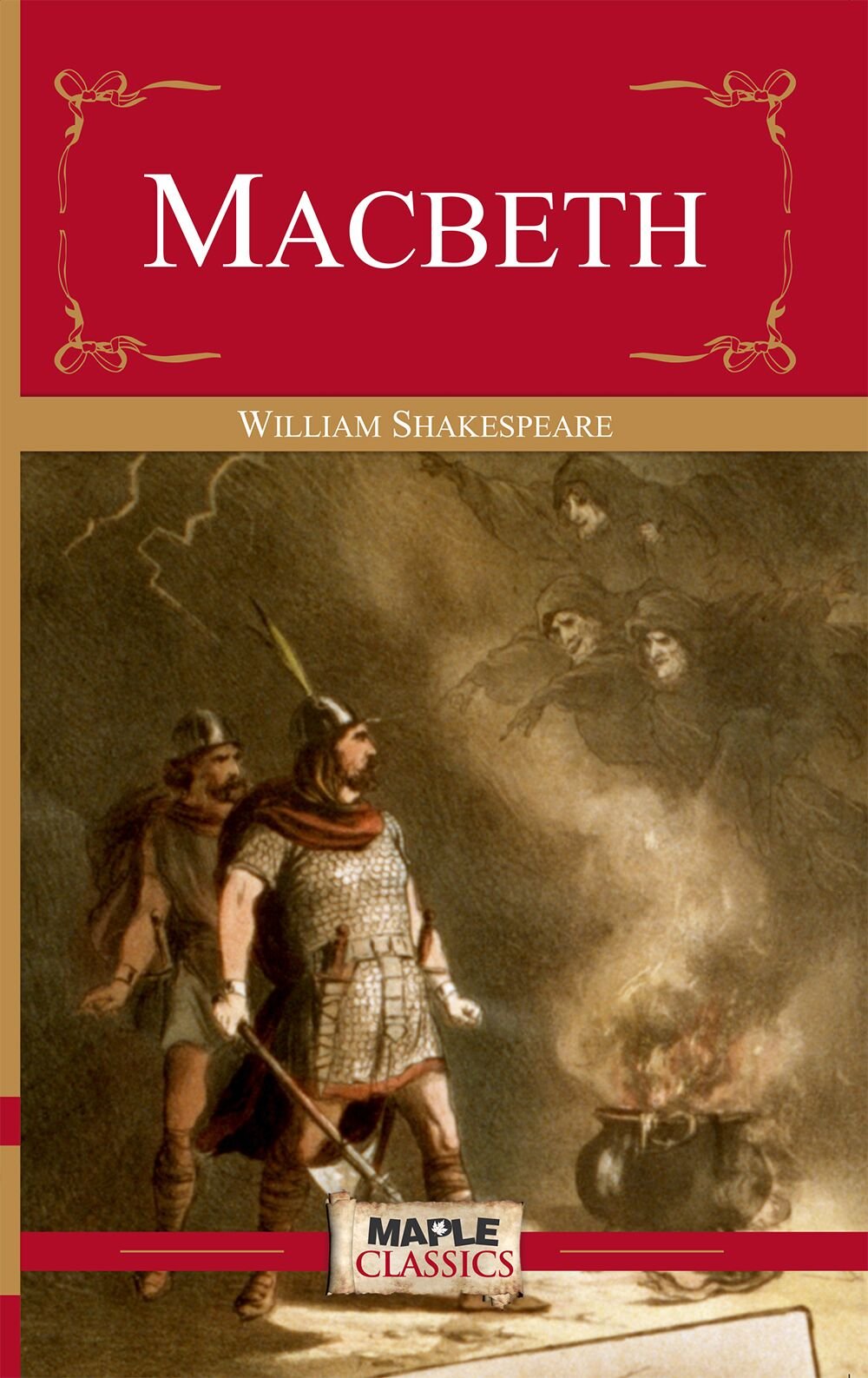 11. Shakespeare’s four great Tragedies (Hamlet, Othello, King Lear, Macbeth). Cramming Shakespeare, the greatest writer of the English language world, into this list, may seem ridiculous, but nor can he be omitted. Reading Shakespeare is like wandering on a planet of endless jewels and having to decide which ones you want to look at and study for a while. The fact that he could combine wisdom with masterful writing has always been one of his enduring mysteries, so much so that many have scrambled to explain this mystery by positing that he could not have been the author of his works, it must have been somebody else. (I do not count myself in that crowd, not so much because of history, but more because of irrelevance). Of his four dominant tragedies my personal favorite has always been Macbeth, one of Shakespeare’s later works, first performed around 1606. It centers on the figure of a Scottish military leader who encounters three witches who give him a prophecy, that he is destined to become king. Filled with the lust of ambition, he kills the existing king (Duncan) and then finds himself caught in the classic power-syndrome situation of having to ruthlessly eliminate others who are a threat to his power base. This all leads to the inevitable insanity and death. The theme is one of the oldest stories in the book, to use a cliché, but Shakespeare’s genius is that he can present it with such mastery. It’s impossible to read Macbeth, or see it performed, without reflecting on the grave consequences of prioritizing power over others above all else.
11. Shakespeare’s four great Tragedies (Hamlet, Othello, King Lear, Macbeth). Cramming Shakespeare, the greatest writer of the English language world, into this list, may seem ridiculous, but nor can he be omitted. Reading Shakespeare is like wandering on a planet of endless jewels and having to decide which ones you want to look at and study for a while. The fact that he could combine wisdom with masterful writing has always been one of his enduring mysteries, so much so that many have scrambled to explain this mystery by positing that he could not have been the author of his works, it must have been somebody else. (I do not count myself in that crowd, not so much because of history, but more because of irrelevance). Of his four dominant tragedies my personal favorite has always been Macbeth, one of Shakespeare’s later works, first performed around 1606. It centers on the figure of a Scottish military leader who encounters three witches who give him a prophecy, that he is destined to become king. Filled with the lust of ambition, he kills the existing king (Duncan) and then finds himself caught in the classic power-syndrome situation of having to ruthlessly eliminate others who are a threat to his power base. This all leads to the inevitable insanity and death. The theme is one of the oldest stories in the book, to use a cliché, but Shakespeare’s genius is that he can present it with such mastery. It’s impossible to read Macbeth, or see it performed, without reflecting on the grave consequences of prioritizing power over others above all else.
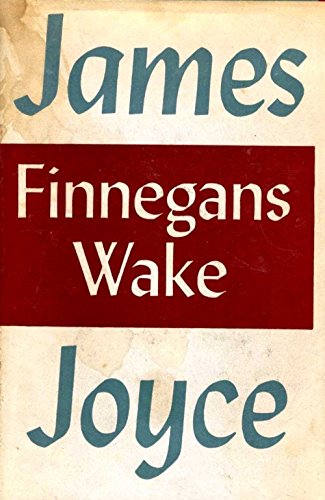 10. Finnegan’s Wake, by James Joyce. This book is notable in that despite its author’s fame, very few people have read it. Of those who have attempted to, few have gotten through all of it. I count myself in this latter group. As part of my English major in university I took a class on Joyce, and we were assigned to read Dubliners, Ulysses, and Finnegan’s Wake. The first two, along with his Portrait of the Artist as a Young Man, had cemented the Irish author’s reputation as one of the greatest English language novelists. But his last work, Finnegan’s Wake, which he labored over for 17 years, is so radically experimental in form and so dense and abstruse in concept that it proves almost impossible to complete, even for the most determined reader. It tops Gurdjieff’s Beelzebub in that regard. That said, it has been read in entirety by some of our more prominent literary critics, including Harold Bloom, who described it as rivalling Dante and Shakespeare, at least on esthetic grounds. Others, such as Colin Wilson, mainly dismiss it as sophisticated self-absorbed tedium. That said, Finnegan’s Wake—at least the parts of it that I myself waded through—is an extraordinary reflection of the madness that the human mind is capable of. Full credit to any reader who can endure that madness to the bitter end, if only to see that there has to be a better way to exist.
10. Finnegan’s Wake, by James Joyce. This book is notable in that despite its author’s fame, very few people have read it. Of those who have attempted to, few have gotten through all of it. I count myself in this latter group. As part of my English major in university I took a class on Joyce, and we were assigned to read Dubliners, Ulysses, and Finnegan’s Wake. The first two, along with his Portrait of the Artist as a Young Man, had cemented the Irish author’s reputation as one of the greatest English language novelists. But his last work, Finnegan’s Wake, which he labored over for 17 years, is so radically experimental in form and so dense and abstruse in concept that it proves almost impossible to complete, even for the most determined reader. It tops Gurdjieff’s Beelzebub in that regard. That said, it has been read in entirety by some of our more prominent literary critics, including Harold Bloom, who described it as rivalling Dante and Shakespeare, at least on esthetic grounds. Others, such as Colin Wilson, mainly dismiss it as sophisticated self-absorbed tedium. That said, Finnegan’s Wake—at least the parts of it that I myself waded through—is an extraordinary reflection of the madness that the human mind is capable of. Full credit to any reader who can endure that madness to the bitter end, if only to see that there has to be a better way to exist.
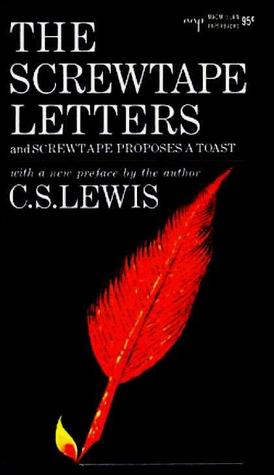 9. The Screwtape Letters (1942), by C.S. Lewis. This clever work was presented as a series of letters written by an advanced demon named Screwtape, to his nephew and charge Wormwood, the latter of whom is attempting to sway a mortal man over to the dark side. Screwtape guides Wormwood in the fine art of persuading the man to abandon Christian values, and to turn away from what Screwtape terms the ‘Enemy’ (God). In the end, Wormwood fails, and the man embraces the high road. Lewis was a committed Christian and thus the whole book is essentially a presentation of Christian apologetics, contrasted to the wily manipulations of the demons, but it is done with such style and wit that one ends up applauding the author more than the sides seeking to secure the soul of the man.
9. The Screwtape Letters (1942), by C.S. Lewis. This clever work was presented as a series of letters written by an advanced demon named Screwtape, to his nephew and charge Wormwood, the latter of whom is attempting to sway a mortal man over to the dark side. Screwtape guides Wormwood in the fine art of persuading the man to abandon Christian values, and to turn away from what Screwtape terms the ‘Enemy’ (God). In the end, Wormwood fails, and the man embraces the high road. Lewis was a committed Christian and thus the whole book is essentially a presentation of Christian apologetics, contrasted to the wily manipulations of the demons, but it is done with such style and wit that one ends up applauding the author more than the sides seeking to secure the soul of the man.
8. Cutting Through Spiritual Materialism, by Chogyam Trungpa. One of Trungpa’s classics, based on a series of talks he gave in the early 1970s. This Tibetan Buddhist master was no common guru and has been condemned by almost as many who have admired him.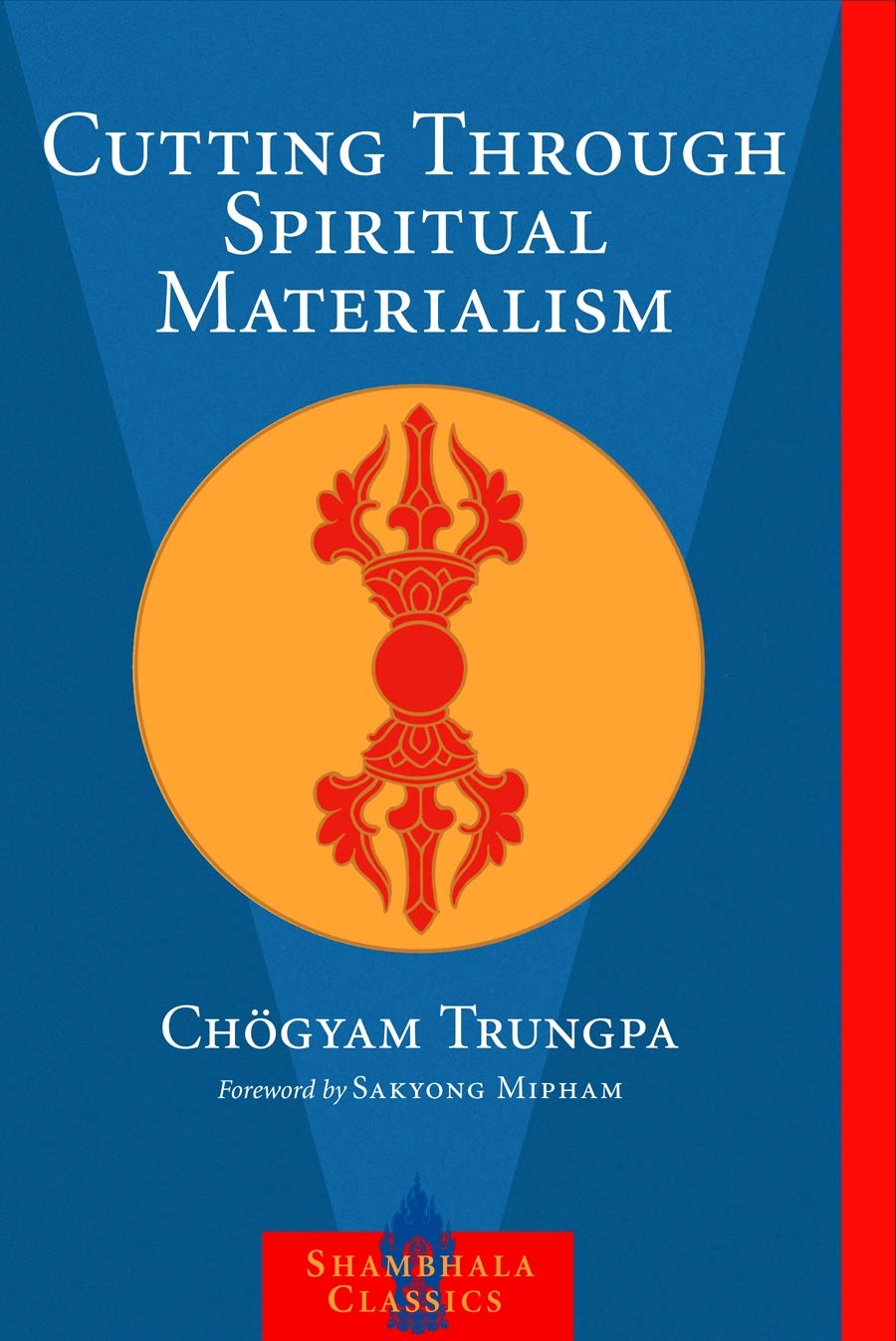 He was one of the very first Tibetan tulkus (‘reincarnating’ masters) to appear in the West and offer teachings on the advanced Vajrayana Buddhist practices. Cutting Through Spiritual Materialism is all about the ego’s wily ability to convert anything to its use, including spiritual teachings. The great irony of course is that the ego itself is seen to be intrinsically empty when understood, but it can even use the teaching about its own inherent emptiness in service to promote its apparent existence. Spiritual methods and teachings are easily co-opted by the ego and used for ego-reinforcement or, in more exaggerated cases, ego-inflation. Trungpa was a scholar, a meditation master, an artist, and an alcoholic who regularly drank highballs of gin before his morning lectures. He died at age 48 of liver disease. He was no great example to emulate. But this book is still a potent classic and deserves to be read by any sincere seeker.
He was one of the very first Tibetan tulkus (‘reincarnating’ masters) to appear in the West and offer teachings on the advanced Vajrayana Buddhist practices. Cutting Through Spiritual Materialism is all about the ego’s wily ability to convert anything to its use, including spiritual teachings. The great irony of course is that the ego itself is seen to be intrinsically empty when understood, but it can even use the teaching about its own inherent emptiness in service to promote its apparent existence. Spiritual methods and teachings are easily co-opted by the ego and used for ego-reinforcement or, in more exaggerated cases, ego-inflation. Trungpa was a scholar, a meditation master, an artist, and an alcoholic who regularly drank highballs of gin before his morning lectures. He died at age 48 of liver disease. He was no great example to emulate. But this book is still a potent classic and deserves to be read by any sincere seeker.
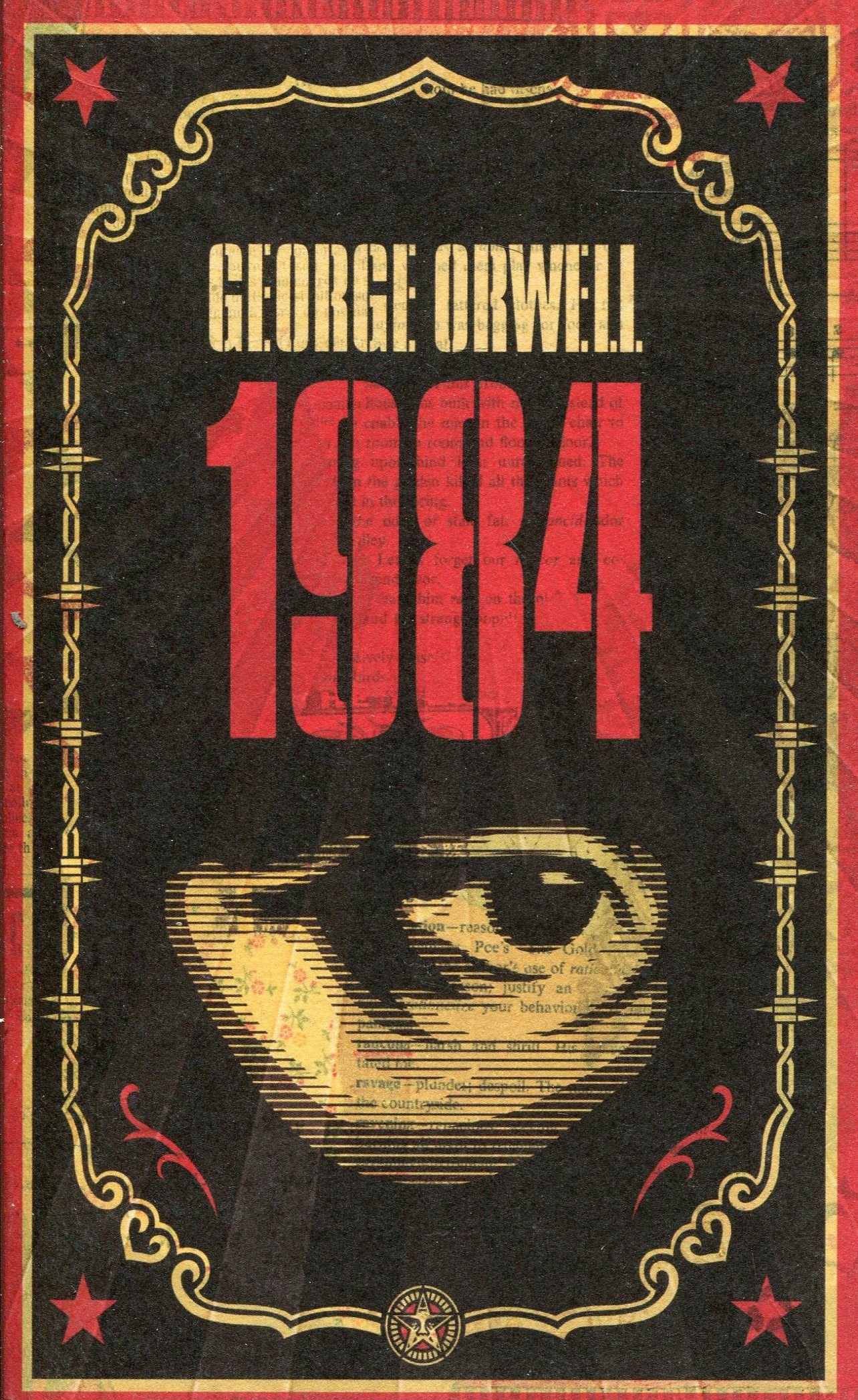 7. 1984, by George Orwell. What to say about this work? To call it iconic is the proverbial understatement. It defines the word ‘dystopia’, as contrasted with utopia. Most writers get better over time (unless you are Colin Wilson), and the fact that 1984 was Orwell’s ninth and last book, may have something to do with its enduring success. The main themes of the novel are an unflinching look at totalitarianism, as well as surveillance and the various ways the ‘powers that be’ can manipulate facts, truths, and perceptions in order to maintain control. It was published in 1949, on the heels of WW2, and so was inevitably shaped by the various dark shadows that still loomed from that war. That said, it has proved eerily prescient in ways too numerous to list. Some of the major ideas of 1984 are: 1. The shadow leader. Big Brother remains a mystery, with no proof of his existence, allowing all sorts of propaganda to be used, via what Orwell called the Ministry of Truth. 2. Thought Control. This control is necessary to enforce loyalty to the rulers. 3. Blotting out individuality. Sex is a duty only to propagate the species. Interpersonal love is discouraged. 4. Blurring identity. The sole identity of importance is Big Brother and the Party. In a sense, all this defines cultic conditioning, based on the underlying principle that the organization is more important than the individual, and that the latter exists merely to serve the former. Cultic conditioning has been basic to most of the ruling institutions throughout the history of human civilization, hence the weird familiarity of Orwell’s novel. He just exaggerates features and makes what is already the case plain and obvious.
7. 1984, by George Orwell. What to say about this work? To call it iconic is the proverbial understatement. It defines the word ‘dystopia’, as contrasted with utopia. Most writers get better over time (unless you are Colin Wilson), and the fact that 1984 was Orwell’s ninth and last book, may have something to do with its enduring success. The main themes of the novel are an unflinching look at totalitarianism, as well as surveillance and the various ways the ‘powers that be’ can manipulate facts, truths, and perceptions in order to maintain control. It was published in 1949, on the heels of WW2, and so was inevitably shaped by the various dark shadows that still loomed from that war. That said, it has proved eerily prescient in ways too numerous to list. Some of the major ideas of 1984 are: 1. The shadow leader. Big Brother remains a mystery, with no proof of his existence, allowing all sorts of propaganda to be used, via what Orwell called the Ministry of Truth. 2. Thought Control. This control is necessary to enforce loyalty to the rulers. 3. Blotting out individuality. Sex is a duty only to propagate the species. Interpersonal love is discouraged. 4. Blurring identity. The sole identity of importance is Big Brother and the Party. In a sense, all this defines cultic conditioning, based on the underlying principle that the organization is more important than the individual, and that the latter exists merely to serve the former. Cultic conditioning has been basic to most of the ruling institutions throughout the history of human civilization, hence the weird familiarity of Orwell’s novel. He just exaggerates features and makes what is already the case plain and obvious.
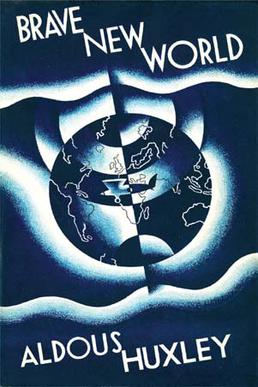 6. Brave New World, by Aldous Huxley. This book, released in 1932, preceded Orwell’s classic by seventeen years and while equally dystopian, presents its foreshadowing in different ways. The jury has long been out on which novel, Huxley’s or Orwell’s, more accurately forecasts the pitfalls of future societies based on the timeless impulse of the powerful few to control the powerless many. Both Brave New World and 1984 are iconic examples of how some of the most important realities of civilization can best be expressed in fictional form. A major theme of Brave New World involves state totalitarianism operating via technology, and especially via the clever manipulation that involves conditioning people to enjoy their slavery. In 1984 people are controlled mainly via fear, whereas in Huxley’s version of the future they are controlled via pleasure. Orwell described a future of people not reading owing to censorship, while Huxley imagined people not reading due to being lost in mindless indulgences. However as touched on above, these novels are best understood as reflections of human psychology, not just a dramatic foreshadowing of some apparently undesirable future. All the things described by Orwell and Huxley have been going on for a long time; the genius of these authors is that they make it seem as if this is only some terrible possible future. I’m reminded of the iconic scene from the first season of The X-Files (1993), in which Fox Mulder encounters his secret informant on an empty sports field. After some back and forth dialogue about the possible existence of manipulative aliens on Earth, the older informant begins to walk away. Mulder calls after him, saying, ‘they’re here, aren’t they?’ To which the informant stops, turns around, and bluntly replies, ‘Mr. Mulder, they’ve been here for a very long time.’
6. Brave New World, by Aldous Huxley. This book, released in 1932, preceded Orwell’s classic by seventeen years and while equally dystopian, presents its foreshadowing in different ways. The jury has long been out on which novel, Huxley’s or Orwell’s, more accurately forecasts the pitfalls of future societies based on the timeless impulse of the powerful few to control the powerless many. Both Brave New World and 1984 are iconic examples of how some of the most important realities of civilization can best be expressed in fictional form. A major theme of Brave New World involves state totalitarianism operating via technology, and especially via the clever manipulation that involves conditioning people to enjoy their slavery. In 1984 people are controlled mainly via fear, whereas in Huxley’s version of the future they are controlled via pleasure. Orwell described a future of people not reading owing to censorship, while Huxley imagined people not reading due to being lost in mindless indulgences. However as touched on above, these novels are best understood as reflections of human psychology, not just a dramatic foreshadowing of some apparently undesirable future. All the things described by Orwell and Huxley have been going on for a long time; the genius of these authors is that they make it seem as if this is only some terrible possible future. I’m reminded of the iconic scene from the first season of The X-Files (1993), in which Fox Mulder encounters his secret informant on an empty sports field. After some back and forth dialogue about the possible existence of manipulative aliens on Earth, the older informant begins to walk away. Mulder calls after him, saying, ‘they’re here, aren’t they?’ To which the informant stops, turns around, and bluntly replies, ‘Mr. Mulder, they’ve been here for a very long time.’
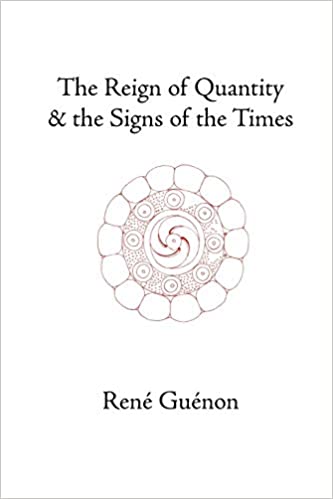 5. The Reign of Quantity and the Signs of the Times, by Rene Guenon. The inclusion of this book at this place in the list, may come as a surprise, mainly because Guenon is doubtless obscure to most readers. Even among mystics and esoteric specialists he is not popular. This was Guenon’s most important work, published in 1945, after Brave New World and just before 1984. As opposed to the fictional approach taken by Huxley and Orwell, Guenon examines the problematic trajectory of human civilization from the point of view of a mystic and a Traditionalist. The Traditionalist School is a philosophical school that originated in the early 20th century, centered around such thinkers and writers as Guenon, Schuon, Coomaraswamy, Burkhardt, and Huston Smith. It is arguably the deepest and most profound of all approaches to wisdom, or at least, it strives to be. Its main tenets are belief in the perennial philosophy, a form of universalism that posits that a singular underlying truth and wisdom underlies all religions and philosophies, though one that has become distorted and corrupted over time. Guenon’s book is entirely about this degradation and corruption of wisdom in modern times. However, he is not merely a critic, come only to deconstruct and dismantle with his words. He is also a writer who promotes the reality of the timeless and changeless underlying metaphysical truths, something the fiction authors tend to ignore or only vaguely touch on. Guenon is difficult to read, and his relentless criticism of modernity may seem discouraging, but he is rewarding for those ready to dig deep into the human condition, regardless of whether or not you agree with his basic position that we are living in a degraded time.
5. The Reign of Quantity and the Signs of the Times, by Rene Guenon. The inclusion of this book at this place in the list, may come as a surprise, mainly because Guenon is doubtless obscure to most readers. Even among mystics and esoteric specialists he is not popular. This was Guenon’s most important work, published in 1945, after Brave New World and just before 1984. As opposed to the fictional approach taken by Huxley and Orwell, Guenon examines the problematic trajectory of human civilization from the point of view of a mystic and a Traditionalist. The Traditionalist School is a philosophical school that originated in the early 20th century, centered around such thinkers and writers as Guenon, Schuon, Coomaraswamy, Burkhardt, and Huston Smith. It is arguably the deepest and most profound of all approaches to wisdom, or at least, it strives to be. Its main tenets are belief in the perennial philosophy, a form of universalism that posits that a singular underlying truth and wisdom underlies all religions and philosophies, though one that has become distorted and corrupted over time. Guenon’s book is entirely about this degradation and corruption of wisdom in modern times. However, he is not merely a critic, come only to deconstruct and dismantle with his words. He is also a writer who promotes the reality of the timeless and changeless underlying metaphysical truths, something the fiction authors tend to ignore or only vaguely touch on. Guenon is difficult to read, and his relentless criticism of modernity may seem discouraging, but he is rewarding for those ready to dig deep into the human condition, regardless of whether or not you agree with his basic position that we are living in a degraded time.
 4. The Masters of Wisdom (1974), by John Bennett. This relatively obscure book was written by an equally obscure but profound teacher of higher wisdom. John Bennett had been a disciple of Gurdjieff, but he was also very much his own man. Trained in mathematics, philosophy, fluent in multiple languages, and a master of the inner work of several systems of transformation, he dedicated his elder years to uncovering evidence for the existence of what he called a ‘Directorate’, a loosely organized Underground of advanced teachers who from time to time intervene in human affairs when they deem it necessary to provide course corrections for humanity. This idea has been explored before, in some less than impressive ways, probably most famously by Madame Blavatsky in her late 19th century works The Secret Doctrine and Isis Unveiled, but Bennett accomplishes it the most impressively (not to mention which, parts of Blavatsky’s work was plagiarized). Bennett spent many years traveling through Central Asia and learning from Sufi masters, so his approach was not merely analytical, though he does write with the exactitude of a serious researcher. Bennett wrote numerous works on the work of transformation, most of which are practical. The Masters of Wisdom was his last work, and he died on the day he started to write its final chapter. His wife, Elizabeth Bennett, finished it for him based on notes he had compiled and saw to its publishing.
4. The Masters of Wisdom (1974), by John Bennett. This relatively obscure book was written by an equally obscure but profound teacher of higher wisdom. John Bennett had been a disciple of Gurdjieff, but he was also very much his own man. Trained in mathematics, philosophy, fluent in multiple languages, and a master of the inner work of several systems of transformation, he dedicated his elder years to uncovering evidence for the existence of what he called a ‘Directorate’, a loosely organized Underground of advanced teachers who from time to time intervene in human affairs when they deem it necessary to provide course corrections for humanity. This idea has been explored before, in some less than impressive ways, probably most famously by Madame Blavatsky in her late 19th century works The Secret Doctrine and Isis Unveiled, but Bennett accomplishes it the most impressively (not to mention which, parts of Blavatsky’s work was plagiarized). Bennett spent many years traveling through Central Asia and learning from Sufi masters, so his approach was not merely analytical, though he does write with the exactitude of a serious researcher. Bennett wrote numerous works on the work of transformation, most of which are practical. The Masters of Wisdom was his last work, and he died on the day he started to write its final chapter. His wife, Elizabeth Bennett, finished it for him based on notes he had compiled and saw to its publishing.
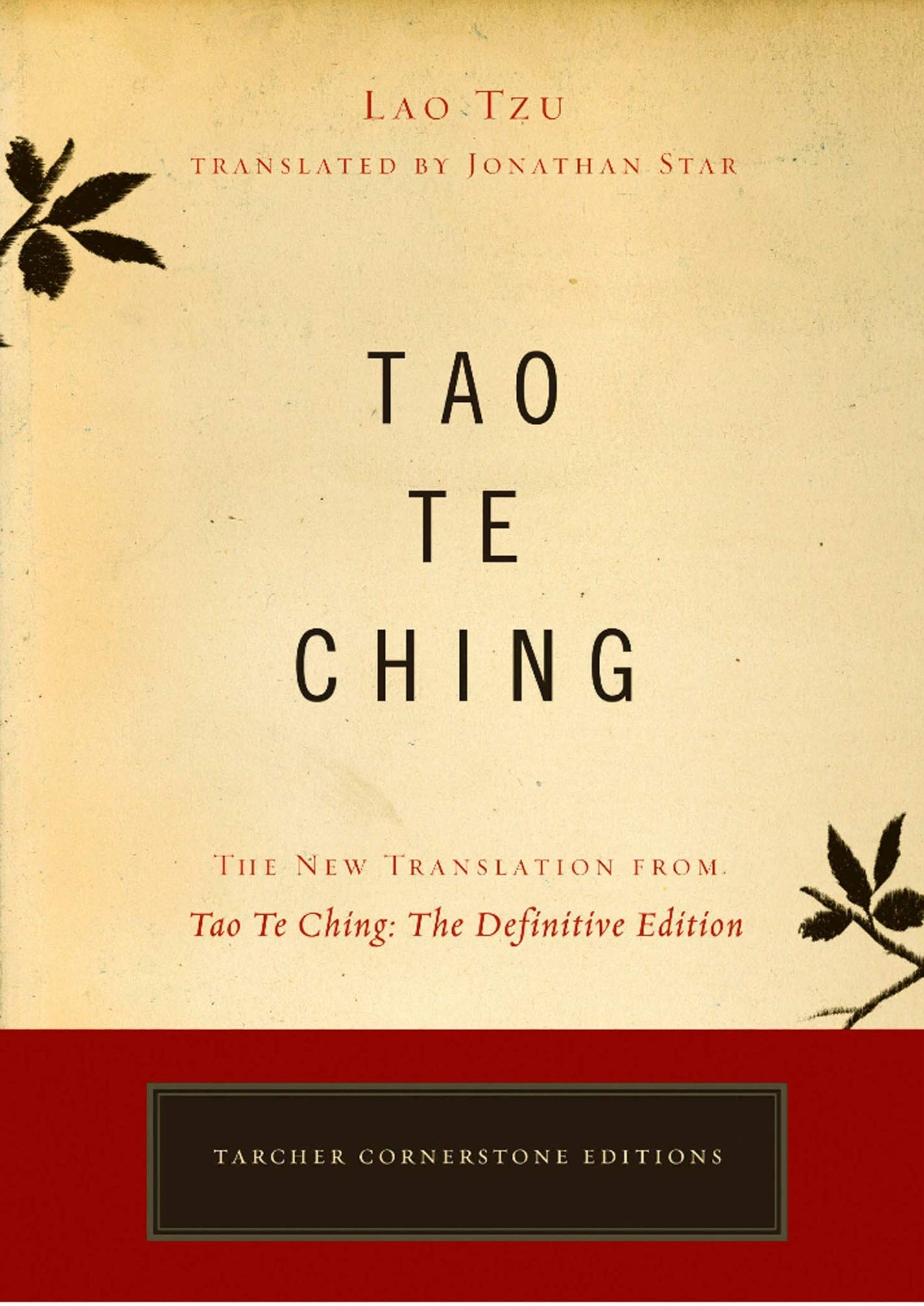 3. Tao Te Ching. I hesitate to include this small classic, because it has been translated so many times (not to say dumbed down by many New Age writers) and each translation is different, sometimes radically so, from others. Still, the underlying spirit of this great work tends to shine through, in spite of the stylistic choices of any given translator. Attributed to the legendary Chinese sage Lao Tzu, who may or may not have lived a few centuries before Christ, the book is a masterful collection of aphorisms designed to cut through the rigid interpretations of a mind conditioned in such a way as to be largely void of wisdom. The Tao Te Ching draws the reader back to the silent, still, wise center that is intrinsic to consciousness—provided we can be silent and still enough to listen, and more importantly, provided that we are courageous enough to see through our ego-based conditioned views of reality. This book, as well as any, truly makes the reader stop, look, and see.
3. Tao Te Ching. I hesitate to include this small classic, because it has been translated so many times (not to say dumbed down by many New Age writers) and each translation is different, sometimes radically so, from others. Still, the underlying spirit of this great work tends to shine through, in spite of the stylistic choices of any given translator. Attributed to the legendary Chinese sage Lao Tzu, who may or may not have lived a few centuries before Christ, the book is a masterful collection of aphorisms designed to cut through the rigid interpretations of a mind conditioned in such a way as to be largely void of wisdom. The Tao Te Ching draws the reader back to the silent, still, wise center that is intrinsic to consciousness—provided we can be silent and still enough to listen, and more importantly, provided that we are courageous enough to see through our ego-based conditioned views of reality. This book, as well as any, truly makes the reader stop, look, and see.
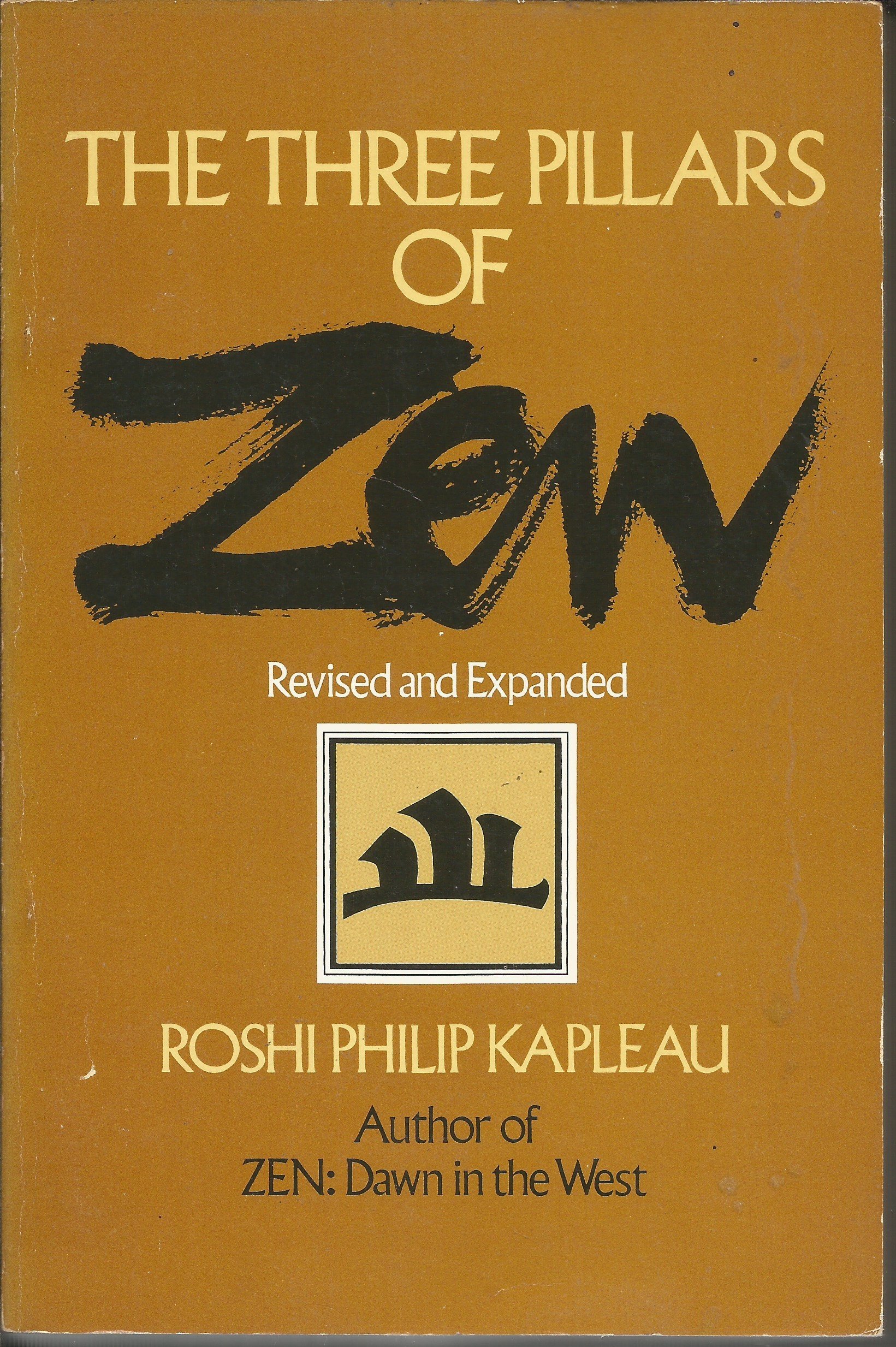 2. The Three Pillars of Zen, by Roshi Philip Kapleau. This classic was written by a former war correspondent who found himself in Japan in the 1950s, studying under some renowned Zen masters in one of that country's more notorious Zen monasteries. The whole power of this book is based on its sheer practicality. It provides only a minimum of theory, instead focusing on the real-life efforts, closely documented, of seekers of spiritual enlightenment striving to break through the barriers of their egos and open the 'wisdom eye'. There are few books that can generate zeal for awakening, for taking the Red Pill, or whatever metaphor floats your boat, more than this book. The method used by most of the subjects in the book is the Rinzai 'direct realization' approach used by that school (in contrast to the slow and steady Soto approach) based largely on the legendary power of the Zen koan (a rationally insoluble question). 'What is the sound of one hand clapping?' has become something of a cliche, but The Three Pillars of Zen describes with startling clarity just what happens to one's mind when a Zen koan is truly penetrated. This book is for serious inquirers only.
2. The Three Pillars of Zen, by Roshi Philip Kapleau. This classic was written by a former war correspondent who found himself in Japan in the 1950s, studying under some renowned Zen masters in one of that country's more notorious Zen monasteries. The whole power of this book is based on its sheer practicality. It provides only a minimum of theory, instead focusing on the real-life efforts, closely documented, of seekers of spiritual enlightenment striving to break through the barriers of their egos and open the 'wisdom eye'. There are few books that can generate zeal for awakening, for taking the Red Pill, or whatever metaphor floats your boat, more than this book. The method used by most of the subjects in the book is the Rinzai 'direct realization' approach used by that school (in contrast to the slow and steady Soto approach) based largely on the legendary power of the Zen koan (a rationally insoluble question). 'What is the sound of one hand clapping?' has become something of a cliche, but The Three Pillars of Zen describes with startling clarity just what happens to one's mind when a Zen koan is truly penetrated. This book is for serious inquirers only.
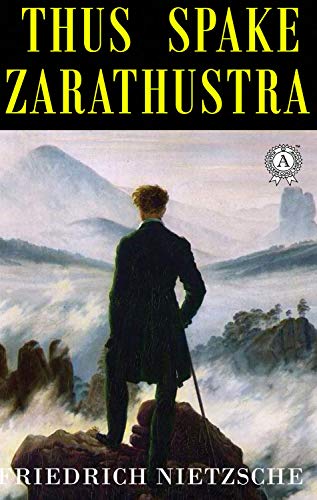 1. Thus Spake Zarathustra, by Nietzsche. Many regard this philosophical novel, published in entirety by 1885, as Nietzsche’s greatest work. The character is the namesake of the ancient Zoroastrian prophet, but in the novel he is a mouthpiece for Nietzsche’s ideas. Running through much of Nietzsche’s writings, and certainly in Zarathustra, is his condemnation of classic Greek or Modern values, especially the attempts of religion and science to formulate ‘truths’ and see order and purpose in the cosmos. For Nietzsche, the cosmos is a chaotic river of conflicting forces, and part of being truly alive and present is coming to terms with that, rather than hiding out in theories and doctrines that seek to realize order and perfection where none exist. If in this regard only Nietzsche is the ultimate ‘dangerous thinker’ to read, as once you understand him, he will do as much as anyone to turn your worldview upside down and make you question most of what you’ve come to believe via rote education and conventional conditioning.
1. Thus Spake Zarathustra, by Nietzsche. Many regard this philosophical novel, published in entirety by 1885, as Nietzsche’s greatest work. The character is the namesake of the ancient Zoroastrian prophet, but in the novel he is a mouthpiece for Nietzsche’s ideas. Running through much of Nietzsche’s writings, and certainly in Zarathustra, is his condemnation of classic Greek or Modern values, especially the attempts of religion and science to formulate ‘truths’ and see order and purpose in the cosmos. For Nietzsche, the cosmos is a chaotic river of conflicting forces, and part of being truly alive and present is coming to terms with that, rather than hiding out in theories and doctrines that seek to realize order and perfection where none exist. If in this regard only Nietzsche is the ultimate ‘dangerous thinker’ to read, as once you understand him, he will do as much as anyone to turn your worldview upside down and make you question most of what you’ve come to believe via rote education and conventional conditioning.